
About UsThe Numismatic Bibliomania Society is a non-profit organization devoted to the study and enjoyment of numismatic literature. For more information please see our web site at coinbooks.org SubscriptionsThose wishing to become new E-Sylum subscribers (or wishing to Unsubscribe) can go to the following web page link MembershipThere is a membership application available on the web site Membership Application To join, print the application and return it with your check to the address printed on the application. Membership is only $20 to addresses in the U.S., $25 for First Class mail, and $30 elsewhere. For those without web access, write to: Terry White, Treasurer
AsylumFor Asylum mailing address changes and other membership questions, contact Terry at this email address: terrywhite5475@yahoo.com SubmissionsTo submit items for publication in The E-Sylum, just Reply to this message, or write to the Editor at this address: whomren@gmail.com BUY THE BOOK BEFORE THE COIN |
- WAYNE'S WORDS: THE E-SYLUM OCTOBER 11, 2015
- NEWMAN NUMISMATIC PORTAL DIGITIZES THE ASYLUM
- KOLBE & FANNING 20% OFF WEB SALE
- NEW BOOK: GOLD DUCATS OF THE NETHERLANDS
- BOOK REVIEWS: BYZANTINE NEW RELEASES
- DICK JOHNSON GRADES NUMISMATIC GLOSSARIES
- THOUGHTS ON PRESS RUNS OF NUMISMATIC BOOKS
- SELECTED PRINCETON COLLECTION COINS AND MEDALS
- NOTES FROM E-SYLUM READERS: OCTOBER 11, 2015
- THOUGHTS ON THE J.L. BERCH COUNTERSTAMP
- FINKELSTEIN ON DR. DAVID RITTENHOUSE – PART 1
- BRITISH COUNTERFEITING IN COLONIAL AMERICA
- BANKNOTES OF NEW BERN, NORTH CAROLINA
- ARTHUR MEYER KAGIN 1919-2005
- CIRCUIT REJECTS SWOGER'S SUIT OVER BRASHER DOUBLOON
- MORE ON THE NEW ORLEANS MINT
- ALVIN JOHN FINK (1875-1965)
- WAYNE'S NUMISMATIC DIARY: OCTOBER 11, 2015
- BEHIND THE SCENES: WORKING ON THE E-SYLUM
- SELECTIONS FROM ERIC P. NEWMAN COLLECTION PART VII
- ISIS MINT FOUND IN TURKEY
- CONFLICT ANTIQUITIES AND THE ANS
- JULIA MAESA: THE FIRST FEMALE CAESAR
- HELMSLEY ROMAN COIN HOARD GIVEN TO ARCHIVE
- NUMISMATICS OF THE CRYSTAL PALACE
- COMMEMORATIVE MEDAL SELECTIONS FROM BALDWIN'S
- CHRISTIE'S SELLS SIR ERNEST SHACKLETON'S MEDALS
- 1908 GOLD MANCHESTER UNITED MEDAL
- 2015 WALL STREET BOURSE AND AUCTION
- HEIDELBERGER MÜNZHANDLUNG AUCTION 66
- PRANKSTER DISTRIBUTES FAKE BOOKS AND SIGNS
- FEATURED WEB SITE: COLLECTORS.COM
Click here to access the complete archive
To comment or submit articles, reply to whomren@gmail.com
WAYNE'S WORDS: THE E-SYLUM OCTOBER 11, 2015

Sometimes readers report not receiving their E-Sylum issue by email. If that happens to you, please check with me to confirm your address is on our mailing list. Next, check your spam folders to see if it’s ending up there.
If you are on our list and just not seeing the issues at all, it could be that your Internet Service provider (ISP) is blocking it for some reason. If your email address ends in "aol.com", then your ISP is AOL. Contact your ISP's help desk about the problem, and ask them to "whitelist" the following: esylum@binhost.com, our server (lists.capalon.com) and my email address homren@gmail.com.
Doug Winter and Dave Bowers had been having these problems, but hopefully they've been taken care of now.
New subscribers this week include:
- Kyle Smith,
- Mary Lannin,
- Mike Moran and
- Jeanne Stevens-Sollman.
This week we open with the digitization of our print journal, The Asylum, a numismatic literature sale, one new book and two reviews. Other topics include numismatic glossaries and press runs, David Rittenhouse, Art Kagin, Alvin Fink, Emile Zola, and the ISIS Mint.
To learn more about gold ducats, British counterfeiting during the American revolution, the Brasher doubloon, the Citizens Coinage Advisory Committee (CCAC), the North Carolina Peacock note, the first female Caesar, and collectors.com, read on. Have a great week, everyone!
Wayne Homren
Editor, The E-Sylum
NEWMAN NUMISMATIC PORTAL DIGITIZES THE ASYLUM

With approval of the NBS board, and at no cost to the NBS, the Newman Numismatic Portal (NNP) has completed scanning of The Asylum through the year 2013. These issues are online and may be viewed at https://archive.org/details/newmannumismatic?and[]=asylum.
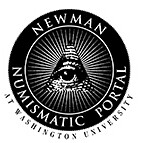 The Newman Portal, administered through Washington University in St. Louis, has two overhead scanners in operation and has processed over
60,000 pages since June 2015. Progress on The Asylum has been rapid – following NBS board approval on August 13, and written approval of
President Marc Ricard on September 2, scanning has been completed in just a few weeks. Individuals or organizations with similar needs are invited to
contact NNP project coordinator Len Augsburger at leonard.augsburger@wustl.edu.
The Newman Portal, administered through Washington University in St. Louis, has two overhead scanners in operation and has processed over
60,000 pages since June 2015. Progress on The Asylum has been rapid – following NBS board approval on August 13, and written approval of
President Marc Ricard on September 2, scanning has been completed in just a few weeks. Individuals or organizations with similar needs are invited to
contact NNP project coordinator Len Augsburger at leonard.augsburger@wustl.edu.

“At the ANA Convention last year in St. Louis [1979], about a dozen fellow bibliomaniacs gathered together for an informal dinner and agreed to form an organization for numismatic book and catalogue collectors,” wrote editors Jack Collins and George Kolbe in the inaugural issue of The Asylum. The remainder of the issue covered topics which nearly thirty years later still prove timeless – John Adams on literature of the large cent, or George Kolbe on Crosby (#2 on our list, arguably #1 at the time as Breen did not yet exist). In between there and here The Asylum has served as the platform for core studies, esoterica, and more than a few pointed comments on the state of American numismatics.
To view The Asylum Wiki page, see:
http://wiki.coinbooks.org/index.php/THE_ASYLUM
KOLBE & FANNING 20% OFF WEB SALE
 Kolbe & Fanning are holding a sale for the next couple days on items listed as part of their online bookstore at numislit.com . Orders received October 11-13 will be 20% off, with flat-rate domestic shipping of $5 regardless of how
much is ordered (foreign orders will be shipped at cost).
Kolbe & Fanning are holding a sale for the next couple days on items listed as part of their online bookstore at numislit.com . Orders received October 11-13 will be 20% off, with flat-rate domestic shipping of $5 regardless of how
much is ordered (foreign orders will be shipped at cost).
Our online book selection features over 1300 titles and covers the spectrum of numismatic specialties, including ancient, medieval and modern coins, medals, paper money and exonumia. We handle works from all periods and in all languages, so check us out and take advantage of our 20% off sale through the end of Tuesday, October 13.
The Kolbe & Fanning website can be found at numislit.com .

NEW BOOK: GOLD DUCATS OF THE NETHERLANDS
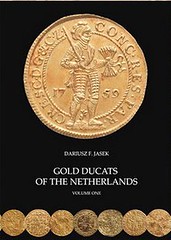 A new book released during a coin show in the Netherlands celebrates one of the most famous world trade coins, the ducat.
A new book released during a coin show in the Netherlands celebrates one of the most famous world trade coins, the ducat.
Gold Ducats of the Netherlands, Vol. 1, by Dariusz F. Jasek, was released during the Houten coin fair Sept. 19.
Inspired by Italian florins, the first gold ducats were issued in 1285 in Venice, with a weight of 3.5 grams and measuring 20 millimeters in diameter.
Wide acceptance of these Venetian coins in trade spawned ducats of the same weight and fineness (.986 fine gold) in other countries, notably those issued by the Dutch provinces beginning in 1586.
The Dutch ducat’s unchanged weight and purity are credited for its popularity. Those unchanging standards were in contrast to other gold trade coins like the gulden and florins that were circulating in Europe alongside the ducat.
The Dutch ducat became “the most important gold coin in international trade for several centuries,” according to the book.
Jasek researched the book for five years, the publisher said. The book features sales records dating back to the 1880s. It includes historical data on each of the Dutch mints that struck ducats and lists provenances for famous pieces. The book also explores multiple varieties and forgeries. A preview of the 352-page book is available at the book’s website.
The book is published for €135 (about $151 U.S.) with free shipping.
For more information, or to order, see:
http://goldducats.com/
To read the complete article, see:
New book
offering research into Dutch gold ducat coins debuts
(www.coinworld.com/news/world-coins/2015/10/new-book-offering-research-into-dutch-gold-ducat-coins-debuts.html#)

BOOK REVIEWS: BYZANTINE NEW RELEASES
Byzantine numismatics is a something for keen specialists. To begin with, if you want to really delve into the subject you must not limit yourself to reading only those works that are written in English, let alone German. By tradition, French is a highly important language in Byzantine studies as well. And so the two books we would like to introduce you here are likewise written in French.
Byzance et sa monnaie
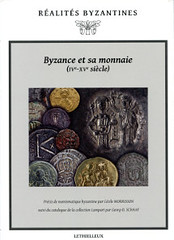 Cécile Morrisson, Byzance et sa monnaie (Ive-XVe siècle), Précis de numismatique byzantine suivi du catalogue de la collection Lampart
par Georg-D. Schaaf. Éditions Lethielleux, Paris 2015. 230 pages, black and white illustrations throughout. 17.5 x 25 cm. Paperback. Thread
stitching. ISBN 978-2-249-62312-7. 32 euros.
Cécile Morrisson, Byzance et sa monnaie (Ive-XVe siècle), Précis de numismatique byzantine suivi du catalogue de la collection Lampart
par Georg-D. Schaaf. Éditions Lethielleux, Paris 2015. 230 pages, black and white illustrations throughout. 17.5 x 25 cm. Paperback. Thread
stitching. ISBN 978-2-249-62312-7. 32 euros.
The first book has been written by the Grande Dame of Byzantine numismatics, Cécile Morrisson. It is nothing less than a précis. For all those who have a basic vocabulary consisting of what they need to read a French menu: A précis is a handbook that summarizes what is the most essential of an academic discipline in a minimal amount of space.
As a matter of fact, 100 pages are enough for Cécile Morrisson to masterfully deal with the coinage of an entire millennium. Beginning with minting technology and its changes over time and giving an overview of metrology, she arrives at the several denominations of the rulers. A large part of her work focuses on the coins’ imagery and their interpretation, and finally addresses the question whether or not the users of the coins could actually understand them in the first place.
The focus shifts away from the coins in the next question that tackles the issue of the extent to which coins were used as a means of imperial finance. Morrisson not only deals with the question of the individual mints but likewise traces the denominations’ losses in both weight and fineness. The circulation, both national and international, of the coins is a topic that is also dealt with here.
Cécile Morrisson provides the reader with a smart text that far exceeds anything that can be found in a usual collectors’ compendium. It raises the awareness of the fact that numismatics is much more than a nice catalog with a short introduction.
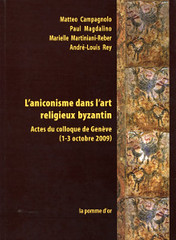 Aniconism in the religious art of Byzantium
Aniconism in the religious art of Byzantium
Matteo Campagnolo, Paul Magdalino, Marielle Martiniani-Reber, André-Louis Rey, L'aniconisme dans l'art religieux byzantin. Actes
du colloque de Genève (1-3 octobre 2009). La pomme d'or Publishing, Geneva 2014. 230 pages + 70 pages wihout pagination, 115 color
plates. Paperback. (Poor) adhesive binding. ISBN 978-2-8306-0257-9. 42 CHF.
Speaking of catalogs: The Swiss city of Fribourg is the home of the collection of Albert Lampart (1928-2003). After studying at the Pontificio Istituto Orientale in Rome between 1958 and 1962 and obtaining a doctoral degree (Dr theol), Albert Lampart served as a priest. It was most likely during his time in Rome that he became infatuated with Byzantine numismatics, which, in the end, brought the department for Early Christian and Byzantine numismatics in Fribourg an interesting collection of Byzantine coins, of which the catalog has been prepared by Georg-D. Schaaf for the very same book. Apart from 108 Byzantine coins, the catalog likewise comprises some non-Byzantine specimens, making a marvelous illustration of the handbook written by author Cécile Morrisson (though the quality of some of the images could be a little bit better).
Now, we are turning to a perfect addition to the concise handbook: colloquium proceedings published by Matteo Campagnolo, Paul Magdalino, Marielle Martiniani-Reber, and André-Louis Rey. The colloquium in 2009 focused on “Aniconism in the religious art of Byzantium”. 20 distinguished researchers have contributed with articles (of which eight are not written in French but in English).
All contributions revolve around aniconism. We would like to highlight at least those articles that deal with numismatic material. In her fundamental article “The religious significance of Byzantine aniconism”, Marie-France Auzépy also takes coins into consideration. Maria Campagnolo-Pothitou, on the other hand, looks at seals in her article „Like the musty odor of early 12th-century iconoclasm: the testimony of the seals“. And Matteo Campagnolo has given his article the provocative title: “Was there anything as an iconoclastic coin?” He summarizes the coins from the relevant period and investigates their relation to the ban on images.
As you see, Byzantium is a fascinating subject-matter even if you have to brush up your school knowledge in French!
To read the complete article, see:
Byzantine new releases (www.coinsweekly.com/en/News/4?&id=3689)
DICK JOHNSON GRADES NUMISMATIC GLOSSARIES
Two weeks ago I received a manuscript from Gary Beals whose name has appeared in The E-Sylum several times in the last six months. He wanted me to critique his glossary of numismatic terms. Gary is an American living in Spain, he wants to publish a Spanish-English, English-Spanish glossary of numismatic words, an admirable project.
I have two notebooks filled with numismatic glossaries. I used these when compiling my encyclopedia of coin and medal technology. A glossary is a term defined by one or more sentences. An encyclopedia is a fuller treatment. I had analyzed numismatic glossaries not to overlook a necessary technical term for my encyclopedia.
What I found was interesting. The better glossaries were by more experienced numismatists. I ranked one by Walter Breen a grade A+. He had 230 entries in his 1977 book, Encyclopedia of U.S. Proof Coins. He expanded that list to 583 in his 1988 Encyclopedia of United States Coins. This is the best in the field.
Of almost equal rank is a glossary prepared by the staff at the American Numismatic Society. Of only 41 terms – the most basic terms – it is graded an A for what it contains. Oh, I wish these experts had done more.
The American Numismatic Association prepared its Dictionary of Numismatic Terms with 178 terms compiled by a committee over a period of years. I was on that committee for one year when it was conducted by Russ Rulau. I grade it a C as I experienced first-hand the shortcomings of a committee, defining by consensus. I resolved to prepare my encyclopedia as a result of that experience.
Coin World has a glossary in its Almanac; the most recent edition lists 245 terms, grade B. I found specialized glossaries by Pete Smith on large cents, 112 terms, grade B; David Cassel on patterns 71 terms, grade D for some misinformation; Chris Eimer on 50 British terms, grade B; and Denis Cooper on 165 technical terms, grade B+. Other published glossaries I found ranged from 12 in a book on enameling, to a complete book length on metal casting.
Most compilers of glossaries rely heavily on Frey (Albert Romer). His 1917 Dictionary of Numismatic Names contains 4,111 entries with heavy emphasis on coin names and denominations, When Spink reprinted this in 1973 they added a section of 560 coin terms in five languages by Mark Salton. It also reprinted that ANA Dictionary.
I found nine numismatic glossaries currently on the internet. What you would expect as most accurate at Wikipedia graded only a D for such incorrect descriptions as “upset” and useless terms as “over charged” – the same meaning as everyday English. Others, often compiled by coin dealers, ranked little higher for their misinformation.
With that analysis of numismatic glossaries as my qualifications I examined Gary Beals’ manuscript. I had time only for working the A and B terms.
Gary is a native of San Diego where he attended San Diego State College earning a journalism degree in 1966. That year he wrote a glossary of numismatic terms of Spain and Spanish America. At 16 he had traveled to Peru, Panama and Costa Rica in search of Spanish America coins. Later he joined the Air Force ultimately serving as Captain in Madrid Spain as Information Officer.
He returned to San Diego and conducted an advertising and public relations agency for 28 years. He returned to Spain and Segovia with his wife in 2004 and resumed coin collecting in 2010. In March this year he decided to compile this English and Spanish numismatic glossary greatly expanding his 1966 work.
Since March he gathered the 1,219 terms in the manuscript he sent me, making great use of Frey and a glossary by John Michael Murbach of Temple City, California, adding others from his own vast numismatic experience of Spanish and American numismatics.
His desire is to publish the total bi-lingual glossary this November. Since he asked, here is my advice:
First, check the alphabetization throughout the book. I found three instances were terms were misplaced, this led to adding the same two terms in two locations.
Second, have the manuscript read by at least two other numismatists who can check for technical accuracy, particularly if you can find specialists, at least one of which who is an authority on paper money.
Somewhat like Frey, but without 3,000 obsolete names, Gary includes coin names, denominations, slang terms, names of organizations and companies, and most important, technical terms -- how numismatic items are made, used and collected.
I can’t wait to see the book in print. It will find a wide use among collectors of both nationalities.
THOUGHTS ON PRESS RUNS OF NUMISMATIC BOOKS
Since my last two books were self-published under my own imprint, PennyBoard Press, I have some experience in this area. Obviously, the potential sales of a book varies with the popularity of the topic. Putting out a book titled How to Get Rich in the Coin Hobby will sell far more readily than one on a much more esoteric subject within the field. As both of my self-published books concern the collecting of coin boards or albums, the very definition of esoteric, I can relate my own experiences.
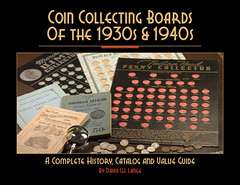 I printed just over 1000 copies of my 2007 book on antique coin boards, and this was done specifically with the intent of reducing the unit
cost to the point where I could offer them wholesale to dealers at half of retail. I was successful in placing about 80-100 books this way, but there
were no repeat orders, so the wholesale scheme proved unnecessary. I was able to sell several hundred at retail, but nearly half of these sales were
achieved only after I slashed the retail price to the former wholesale figure. Sales then stalled, so I donated 300 copies to the ANA for use as
table favors at its 2013 annual banquet, and I still have 100 or so left.
I printed just over 1000 copies of my 2007 book on antique coin boards, and this was done specifically with the intent of reducing the unit
cost to the point where I could offer them wholesale to dealers at half of retail. I was successful in placing about 80-100 books this way, but there
were no repeat orders, so the wholesale scheme proved unnecessary. I was able to sell several hundred at retail, but nearly half of these sales were
achieved only after I slashed the retail price to the former wholesale figure. Sales then stalled, so I donated 300 copies to the ANA for use as
table favors at its 2013 annual banquet, and I still have 100 or so left.
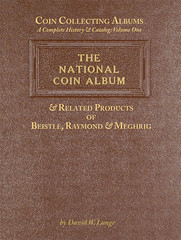 My 2013 book on National Coin Albums and related products was never offered at wholesale, as the unit cost was too high for me to provide
any discount to dealers. I printed 300 of this title, which was the minimum figure for an established printer that was known to do work of the
quality I demanded. I've moved just over 100 of these books to date, and about half the sales have come since the original price was reduced to a
point where I would still cover the unit cost, even after Amazon or eBay takes its pound of flesh.
My 2013 book on National Coin Albums and related products was never offered at wholesale, as the unit cost was too high for me to provide
any discount to dealers. I printed 300 of this title, which was the minimum figure for an established printer that was known to do work of the
quality I demanded. I've moved just over 100 of these books to date, and about half the sales have come since the original price was reduced to a
point where I would still cover the unit cost, even after Amazon or eBay takes its pound of flesh.
One thing I've noticed is that book sales for both my own titles and the more popular titles of commercial publishers in the numismatic field haven't recovered from the 2008-09 recession. There seems to be a malaise over the hobby that inhibits the publishing of new books in recent years, at least within the commercial sector. While my publications are not representative of the overall numismatic field, I would caution prospective authors to think "less is more" when planning their books.
One thing weighing in favor of smaller press runs is that modern printing technology can produce quality works at a reasonable cost that is not necessarily related to the number of copies ordered. The old rule of economy of scale doesn't apply, at least not for press runs of a few hundred or more. Another benefit of modern technology is that additional books usually can be ordered from the printer at the same unit cost, should they be required. This is the so-called "print on demand" service. I'll be looking into this for my current book project on the Library of Coins Albums and other publications of the Coin and Currency Institute (Robert Friedberg). I insist on accurate color reproduction, so I'll be careful in choosing such a printer.
In many instances, the early folders are rarer than coin boards. Being superficially similar to current items, the 1939-50 folders are accorded no respect by coin collectors and dealers, so their survival rate is extremely low. The distinctive size of our beloved coin boards alerts persons to their potential value, and they are thus more likely to be saved than the humble folders, which often get trashed.
To read the earlier E-Sylum article, see:
QUERY: PRESS RUN FOR A NEW BOOK ON NUMISMATICS
(www.coinbooks.org/esylum_v18n40a19.html)

Archives International Auctions, Part XXIX
U.S. & Worldwide Banknotes, Scripophily, Coins,
Historic Artifacts & Ephemera, Artwork, Autographs
and Security Printing Ephemera
October 24th & 29th, 2015
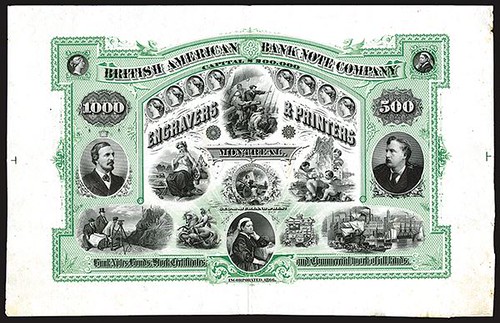
Click the links! Highlights include:
- Lot 26: Thomas Spencer - Honolulu - Sandwich Islands 1858
- Lot 320: Accelerating Steam Navigation Co. 1841 Ten shares
- Lot 363: Confederate States Bond. $10,000. Cr.146, B-339.
- Lot 413: First Liberty Loan Converted 4 _% Gold Bond of 1932-1947
- Lot 607: Fijian Government Debenture, 1872 Issue
- Lot 715: Bono De Caja, El Banco Comercial Refaccionario De Chihuahua
- Lot 738: Banco Nacional Del Peru, 1877 Provisional Issue Specimen
- Lot 809: Bank of Zambia, ND (1964) Specimen Banknote.
- Lot 948: British American Bank Note Company Engravers & Printers Proof
- Lot 960: Draper, Underwood, Bald & Spencer, ND, ca.1820's Sample Sheet.
- Lot 1000: Colonial Pennsylvania, 15 Shillings 5.20.1758.
- Lot 1056: Cherokee Insurance & Banking Co. 2 Dollars. 1862.
- Lot 1139: Bank of America, 1879 Specimen $10,000 Clearing House Certificate.
- Lot 1148: Manufacturers Bank, 184x Proof Banknote on a Proof Vignette Sheet
- Lot 1229: Confederate States. 5 Dollars. 1861.
- Lot 1280: Legal Tender Note. 1863 Series. 5 Dollars.
- Lot 1298: Hackettstown National Bank of NJ., Second Charter $10.00
View the Virtual Catalog
Download the Catalog in PDF format
ARCHIVES INTERNATIONAL AUCTIONS, LLC
1580 Lemoine Avenue, Suite #7
Fort Lee, NJ 07024
Phone: 201-944-4800
Email: info@archivesinternational.com
WWW.ARCHIVESINTERNATIONAL.COM
SELECTED PRINCETON COLLECTION COINS AND MEDALS

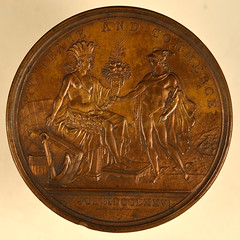
Princeton Diplomatic Medal
The StacksBowers Rarities sale that accompanied Pogue II had an original bronze example of Dupre’s 1792 Diplomatic Medal. he lot description mentions an original in the collection of Princeton University that was not studied as part of the lots description. Fortunately, that piece is viewable on Princeton’s website at the link below. Outside of a rim bump on the obverse at 6:30, it seems like a lovely example.
The Princeton site also shows a lovely 1792 half disme which is probably in the top ½ dozen known, and a 1795 half dollar O-121a which looks like a good match to the one offered in Pogue I lot 1098.

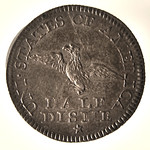
Princeton 1792 Half Disme
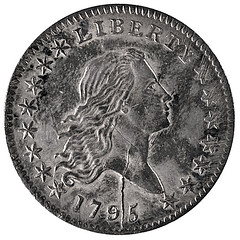
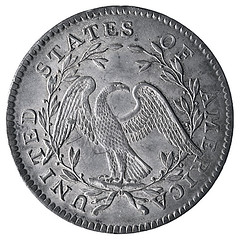
Princeton 1795 Half Dollar
To read the complete item descriptions, see:
"1776"
(1792) United States Diplomatic Medal. Original. Bronze. 67 mm. By Augustin Dupre. (www.stacksbowers.com/BrowseAuctions/LotArchive/
tabid/805/ProductID/926692/AuctionID/6133/Lot/3/Default.aspx)
Augustin Dupré (1748–1833). Diplomatic Medal. Bronze original, 1791.
(http://rbsc.princeton.edu/capping-liberty/item/3021)
United States, silver half disme, 1792.
(http://rbsc.princeton.edu/capping-liberty/item/3032)
United States, silver half dollar, 1795.
(http://rbsc.princeton.edu/capping-liberty/item/3045)
NOTES FROM E-SYLUM READERS: OCTOBER 11, 2015
More On Auction Catalog Weight
Regarding the weight of auction catalogs, Dave Lange writes:
While the clay coating that Mr. Beals mention undoubtedly does contribute to the weight of the paper, I suspect that the greater density of an auction catalog versus natural wood of the same dimensions is an even greater factor. Depending on its variety, a given volume of wood can contain a number of voids, whereas as a book or catalog is pretty much solid.
To read the earlier E-Sylum article, see:
ON AUCTION CATALOG WEIGHT (www.coinbooks.org/esylum_v18n40a11.html)
Emile Zola, Pince-Nez Wearer
Joe Esposito writes:
Another noted pince-nez wearer was the French writer Emile Zola. Here is an 1898 medal of him from the Yale Art Gallery. He also was featured on a commemorative 100-francs coin from France in 1985.
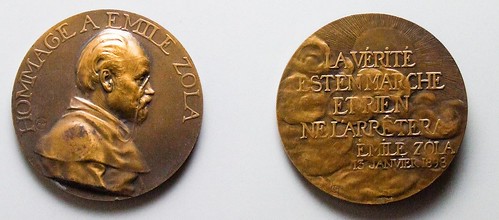
To read the full item description, see:
Bronze Medal from France of Tribute to Émile Zola
(http://artgallery.yale.edu/collections/objects/170010)
To read the earlier E-Sylum article, see:
PINCE-NEZ IN NUMISMATICS (www.coinbooks.org/esylum_v18n39a31.html)
Perkins Artifacts Back in Newburyport
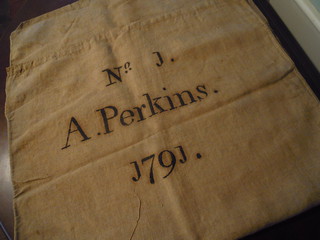
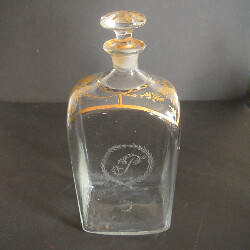
Abraham Perkins, brother of famed Newburyport inventor Jacob Perkins (1766-1849), lived on Fruit St. Abraham helped his brother build and operate an engraving plant for printing paper currency, now known as "The Mint" and owned by the Museum of Old Newbury. Abraham both gave his brother financial assistance to build the facility, and managed the engraving business when Jacob moved to England to pursue other business ventures.
The recent gift to the Museum of Old Newbury includes two cloth bags and two decanters belonging to Abraham Perkins. The bag pictured above measures approximately 26"x50" and bears the inscription "No. 1/A. Perkins/1791." Bags like this were used to carry valuables out of the house in case of fire or other disaster. The decanters boast their original stoppers, nearly flawless gold-painted decoration, and an etched "P" for Perkins.
We are thrilled to add these objects to our collection at the Museum of Old Newbury and are grateful to their donor, Mary Thurlow. Under our care, they will reside just a few doors down from their original home on Fruit St.
THOUGHTS ON THE J.L. BERCH COUNTERSTAMP
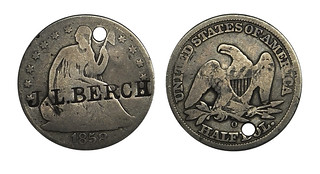
Having read with much interest Jeff Starck's commentary on the Berch counterstamp, I was moved to see what else I might find on the subject. Here's what I found …
The 1876 Racine Advocate City and County Directory provides some info as follows:
Berch, Jesse L., traveling agent, J.I. Case & Co., r. 84 Campbell
Case, Jerome I. (J.I. Case & Co.), and Pres't Manufacturers National Bank, r ws Main 3 n Ninth
Case, J.I. & Co., (Jerome I.C., Stephen Bull, M.B. Erskine, and Robert H. Baker), manufacturers threshing machines and powers, and portable engines; office cor. Erie and Bridge.
An 1862 Racine Directory lists Jesse L. Berch under "Notaries Public" An 1880-81 Evanston, Ill. directory listing: Berch Jesse L. cloaks , 274 Madison, h. Chicago av. opp. Dempster.
I was unable to find any info that would link J.L. Berch to any patents, but it does appear that he was a Mason. He was a paid subscriber to The Masonic Trowel, listed as such in 1869. Jesse's passing on August 23, 1887 was mourned by the Thirty-Second Annual Conclave of the Grand Commandery of Knights Templar of Michigan; and, duly noted in their journal the following year.
My thoughts …
Contrary to what Jeff wrote, I'm not in the least surprised that a New Orleans Mint coin would have been stamped by/for a Northerner.
My own collection contains numerous examples of coins that were stamped many hundreds of miles beyond their mint of origin. For example, I
have a well-circulated, 1875-CC half dollar that was stamped for the Parisian Varieties show in NY City, circa 1876; this, as the show
ended not long thereafter. That silver specie traveled from a Nevada mine to a Big Apple girlie show in a year or so!
I'd not dispute the 1858-O counterstamp's likely attribution to Jesse L. Berch, given the combination of initials in conjunction with the unusual surname. That's a great story about the slave girl, and whoever owns the coin will surely enjoy sharing that bit of history when showing the piece.
I have to agree that this piece bears no justifiable claim to being labeled a “dog tag” or more properly a Civil War Identification Disk. Yet, the hole does seem to render the piece an identification tag or calling card of sorts. Although there's no Masonic symbol on the coin, I'm inclined to suspect that it may have been used along that line, as a form of introduction. It may have been attached to a watch fob or other contrivance at one time. Mr. Berch was a traveling salesman for the Case Company, a Mason and people-person. What better way to impress one's name upon a contact than to display your counterstamped coin? Of course, this is conjecture, but far more plausible, I think; albeit a more humdrum explanation than
To read the earlier E-Sylum article, see:
MORE ON THE J. L. BERCH COUNTERSTAMP
(www.coinbooks.org/esylum_v18n40a26.html)

FINKELSTEIN ON DR. DAVID RITTENHOUSE – PART 1
By David Finkelstein
Introduction
This is part 1 of a series of articles about Dr. David Rittenhouse, the first Director of the United States Mint. Over the last few
decades, multiple incorrect statements and theories about events during his lifetime and after his death have been published in numerous
numismatic articles and publications. These falsities have been perpetuated simply because they were put in print, without any contemporary
evidence to validate them. They have become accepted as being factual. They are not.
Falsity #1 – David Rittenhouse Was Incarcerated In Debtors’ Prison
Robert Morris was a Philadelphia merchant. He was also a signer of the Declaration of Independence, the Articles of Confederation, and the
United States Constitution. During the American Revolution, he used his business connections to arrange for the majority of the financing
for the American military. He served in the Second Continental Congress and was Superintendent of Finance of the United States from 1781 to
1784. While the Federal government resided in Philadelphia, President George Washington lived in Robert Morris’s house. Morris represented
Pennsylvania in the United States Senate from March 4, 1789 to March 4, 1795. In 1789, Washington appointed Morris Secretary of the
Treasury. Morris declined, recommending Alexander Hamilton.
By 1798, Robert Morris was bankrupt and in financial ruin. Beginning in February, 1798, he served 3 ½ years in Philadelphia’s debtors’ prison. In a letter he wrote from debtors’ prison on September 29, 1798 regarding the Yellow Fever Epidemic, he stated:
Our prisoners are gone, except the sick, Banks, Rittenhouse, and myself. Poor Dick is very ill, and they begin to say he is to die… They all have the fever, but still I am not alarmed, although in the house with it. I keep up stairs and avoid all intercourse as much as I can. I have written to William to not to come to-morrow.
Within recent years, it became the belief of a few researchers that the Rittenhouse referred to in Robert Morris’s September 1798 letter was Dr. David Rittenhouse, the first Director of the United States Mint. Since Rittenhouse’s death was widely publicized in Philadelphia newspapers two years earlier, it was then theorized that Rittenhouse did not, in fact, die in 1796. His June 26th death, June 27th burial, and December 17th Eulogium to hundreds of family members, friends, business acquaintances, heads of state (including President Washington), members of Congress, foreign dignitaries, and Philadelphia residents was suggested to have been a massive cover up to maintain the integrity of his image and to protect his reputation. This wild theory also identified Dr. Benjamin Rush (a signer of the Declaration of Independence), and William Barton (consultant to the third committee tasked to develop the Great Seal of the United States and the nephew of David Rittenhouse) as the two people who conspired to fake Rittenhouse’s death.
David Rittenhouse Was Not Incarcerated In Debtors’ Prison
I have found no contemporary evidence that hints, suggests or states that David Rittenhouse was ever sentenced to debtors’ prison or was
ever incarcerated in debtors’ prison. I did find contemporary evidence that a Philadelphia merchant, Joseph Rittenhouse, was incarcerated
in the Pruan (or Prune) Street debtors’ apartment (or prison) during 1796, 1797, and 1798. Per page 613 of Journal of The House of
Representatives of the United States, Being the First Session of the Third Congress: Begun and Held at the City of Philadelphia, December
2, 1793, Volume II, Reprinted by order of the House of Representatives, Gales & Seaton, 1826:
Monday, December 12, 1796.
A petition of Joseph Rittenhouse, of the city of Philadelphia, merchant, now confined in the debtors’ apartment in the said city, was presented to the House and read, praying relief, in the case of a judgment obtained against him in the District Court of Pennsylvania, on behalf of the United States.
Per pages 744 and 745 of the same journal:
Six o’clock, P.M. Friday, March 3, 1797.
Mr. Swanwick, from the committee to whom was referred, on the twelfth of December last, the petition of Joseph Rittenhouse, made a report; which was read, and ordered to lie on the table.
Per page 494 of Annals of the Congress of the United States. Fifth Congress, Gales & Seaton, 1851:
Tuesday, January 30, 1798.
Mr. Ross presented the petition of Joseph Rittenhouse, stating that he is a prisoner at the suit of the United States, and, having surrendered his property, prays to be liberated; and the petition was read.
Ordered, That it lie on the table.
Per page 157 of Journal of The House of Representatives of the United States, Being the First Session of the Fifth Congress: Begun and Held at the City of Philadelphia, May 15, 1797, Volume III, Reprinted by order of the House of Representatives, Gales & Seaton, 1826:
Friday, February 2, 1798.
A petition of Joseph Rittenhouse, late a merchant of the City of Philadelphia, now confined in the debtor's apartment, in the said City, was presented to the House and read, praying relief, in the case of a judgment obtained against him, on behalf of the United States, in the District Court of the United States for the District of Pennsylvania.
Per the 1791 Philadelphia Directory and 1793 Philadelphia Directory, Nichola Lewis, Esq., was the “keeper of the debtors apartment, Pruan St”. Per the 1794 Philadelphia Directory, Nichola Lewis was corrected to Nicholas Lewis as the “brigadier general at the debtors department, Pruan St”. Prune Street was either misspelled multiple times in the 1791, 1793 and 1794 directories [highly unlikely], it was renamed to Prune Street sometime in 1794 or 1795, or it was also referred to as Prune Street. Per the 1795 Philadelphia Directory, John Dickson was the “Keeper of the Debtors apartment, Prune Street”. In the 1796 Philadelphia Directory, Prune Street reverted back to Pruan Street, and John Dickson was the “keeper of the debtor’s apartment, Pruan Street”. There was no mention of a debtors’ apartment or debtors’ prison in the 1797, 1798 or 1799 directories.
[Note: to confuse things even more, references to Pruan and Prune Streets eventually disappeared, reemerging as part of Locust Street. The debtors’ apartment was located at what is now the intersection of Locust and Sixth Streets.]
Who Was Joseph Rittenhouse?
Joseph Rittenhouse was first listed in the 1794 Philadelphia Directory as a merchant located at 119 North Water Street. He was not listed
in the 1795 and later directories. Since the forward to the 1795 Philadelphia Directory was dated September 30, 1795, Joseph Rittenhouse
was most likely in the Pruan Street debtors’ prison by then.
Joseph Rittenhouse advertised 10 times in Philadelphia newspapers between March 10, 1795 and April 4, 1795. See Figures 1 through 4. On June 9, 1795 he placed a notice in the Philadelphia Gazette requesting all persons that had demands against him to furnish him their accounts. See Figure 5. He was eventually sentenced to debtors’ prison, located on Pruan Street, later Prune Street, and now Locust Street.


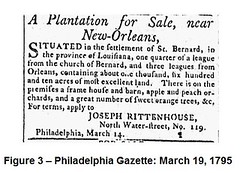
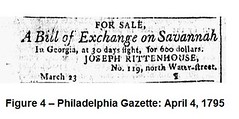
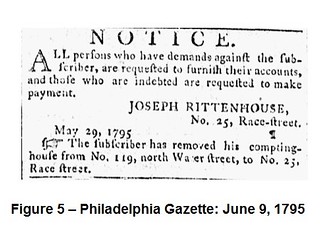
Based on my research from multiple genealogy websites, and Genea-Biographical History Of The Rittenhouse Family And All Its Branches In America, With Sketches Of Their Descendants, Daniel K. Cassel, 1893, I was able to locate three people with the name of Joseph Rittenhouse who lived in the Philadelphia metropolitan area during the latter part of the 18th century. All three were David Rittenhouse’s cousins.
David Rittenhouse’s grandfather, the Reverend Nicholas Rettinghouse, was born in 1666 in Mulheim, Germany. He emigrated to New York, then moved to Germantown, PA. He had 14 children.
Matthias Rittenhouse was born in 1702. He was the son of Nicholas above. Matthias had 10 children, and was the father of David Rittenhouse, the first Director of the United States Mint. David was born on April 8, 1732 in Germantown, PA (7 miles north of Philadelphia).
Henry DeWees Rittenhouse was born in 1700. He was the son of Nicholas, brother of Matthias, and therefore was David’s uncle. He had 7 children.
1. One of Henry DeWees children, William (David’s 1st cousin), was born in 1723 in Roxborough Township, PA. William had 11 children. One of William’s sons, Joseph (David’s 2nd cousin), was born on March 3, 1776 in Germantown, PA. This Joseph Rittenhouse would have been 19 years old when the ads in Figures 1 - 5 were placed in Philadelphia newspapers.
2. Another of Henry DeWees children, Nicholas (David’s 1st cousin), was born in 1725 in Roxborough Township, PA. Nicholas had 4 children. One of his sons, Martin (David’s 2nd cousin) was born on February 12, 1747. Martin was a miller by trade, and owned a mill along the Wissahickon Creek in Roxborough Township, PA. He is most likely the Martin Rittenhouse identified in the Philadelphia Gazette ad in Figure 1. One of Martin’s 8 children, Joseph (David’s 3rd cousin) was born on October 9, 1776. This Joseph Rittenhouse would have been 18 years old when the ads in Figures 1 - 5 were placed in Philadelphia newspapers.
3. A third child of Henry DeWees, Henry (David’s 1st cousin), was born in 1730 in Norritown, PA (just north of Norristown and 20 miles northwest of Philadelphia). Henry had 6 children. One of Henry’s sons, Joseph (David’s 2nd cousin) was born on May 20, 1766 in Worcester Township, PA (25 miles northwest of Philadelphia). This Joseph Rittenhouse was the first cousin of Martin Rittenhouse, and is the best candidate for possibly being the Philadelphia merchant who was incarcerated in debtors prison in 1796, 1797 and 1798. Additional research is required.
Conclusion
David Rittenhouse was never sentenced to debtors’ prison. He was never incarcerated in debtors’ prison. Joseph Rittenhouse, a Philadelphia
merchant, was incarcerated in the Pruan (or Prune) Street debtors’ prison during 1796, 1797, and 1798. Robert Morris was also incarcerated
in the Pruan Street debtors’ prison in 1798. The Rittenhouse referred to in Robert Morris’s September 29, 1798 letter was most likely one
of the three Joseph Rittenhouse’s previously identified. David Rittenhouse did, in fact, die on June 26, 1796.
To be continued…
BRITISH COUNTERFEITING IN COLONIAL AMERICA
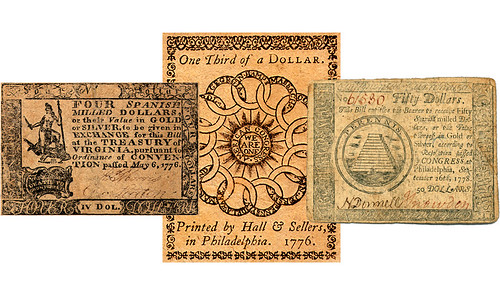
The American Revolution was very much a case of David versus Goliath. A relatively small group of colonists decided that they wanted to break free of the home government, which in this case just happened to be one of the most powerful nations on the globe. Almost overnight the thirteen separate colonies had to form a central government to unify the people, a military to defend the people and a central economy to pay for it all. It was a daunting task that had to be accomplished while undergoing an invasion by the British army, which would continue to make mincemeat out of whatever forces the Americans could throw at it.
The British army, however, had just as many uphill battles to fight. Lack of men and supplies, a chain of command that stretched almost three thousand miles, and a population in the colonies that could range from hostile to very supportive to outright ambivalent. For the British army, meeting the Americans on the field of battle would lead to many victories, but never any that would bring an end to the war. Something besides the force of arms would be needed to bring the colonies to their senses.
To this end a campaign was devised to undermine the nascent American economy in an attempt to achieve a twofer. If the economy was in shambles the Americans would not be able to purchase the men and material needed to continue the war. At the same, by undermining the economy they would also be undermining the American Congress, which was acting as the central government. Perhaps if people lost faith in the Congress, they would realize that war could not be won, and they would all return to the fold.
While it is hard to say whether anyone in the British government sat down and actually put together a comprehensive plan, it is obvious that several different measures were undertaken. These included attempts to limit American trade with foreign nations using the all-powerful British Navy to interdict as much overseas commerce as possible as well as searching vessels from “neutral” countries for war materials in route to America. This move in particular was frowned upon by many European nations.
While these activities were effective to a point, the most effective strategy that was tried, and one that very nearly succeeded, was the massive undertaking of counterfeiting Congressional paper currency to the point of making it almost worthless, thus crashing the American economy. No economy, no more war. In looking at this strategy three questions must be asked: How were the fake notes produced and circulated? Was it effective in undermining the economy? Finally, was this a sanctioned strategy by the British, one that they knowingly pursued? Looking at the counterfeiting strategy through these questions presents an intriguing, and often overlooked aspect of the American Revolution.
For the majority of the war the city of New York was under control of the British. It was here that the majority of the counterfeiting was done. For the most part it was not difficult as many of the advanced security measures that are used today to dissuade such actions were not in use. Even though bank notes had individual handwritten serial numbers and signatures, these were no deterrent as they were easily forged. In addition, most of the Continental currency that was printed by legitimate services was done on the cheap, with little eye to quality. This made the process of counterfeiting it much easier. Often the fake currency could be easily spotted because it was of higher quality than the legitimate bills. The paper was usually a higher quality and the engraving was of a much higher quality on the professionally done counterfeits.
One thing that set the legitimate currency apart was the special paper used, common paper infused with blue fibers and flakes of mica that set it apart from normal paper (a similar method is used today, which makes it much harder to simply photocopy a hundred dollar bill and spend it at the local grocery store). While the paper itself was special it was far from rare. In fact at one point British ships were intercepted on their way to New York that were found to be carrying not only the ink for counterfeiting but massive amounts of the paper. The American frigate Deane, on August 9, 1779, captured the Glencairn out of Glasgow. The report of Commodore Samuel Nicholson of the Deane to the Continental Congress, as published in the Virginia Gazette of October 2, 1779, stated:
To read the complete article, see:
FAKING IT: BRITISH
COUNTERFEITING DURING THE AMERICAN REVOLUTION
(http://allthingsliberty.com/2015/10/faking-it-british-counterfeiting-during-the-american-revolution/)
BANKNOTES OF NEW BERN, NORTH CAROLINA
New Bern, that sounds quite similar to Bern, the capital of Switzerland. As a matter of fact, this American town in North Carolina was founded early in the 18th century, by nearly 100 immigrants from Bern, under the leadership of high-ranking citizens who bore such names as von Graffenried, Ritter, Isot, and Michel. They were complemented by a few Anabaptists, which were rather unpopular in Bern, as well as 600 Palatines from Great Britain, the migration route leaving virtually no other option than to cross England. Likewise part of the endeavor was the explorer and well-known writer John Lawson. After having received written permission to establish a settlement by Anne, Queen of England, on August 22, 1709, the immigrants embarked on their journey to the young British colony. They successfully crossed the Atlantic Ocean and arrived in British Carolina where they founded New Bern in late autumn 1710.
Historiography informs us that severe hostilities between the settlers and the Tuscarora Indians broke out only a couple of months later. During one such conflict, John Lawson was taken captive and killed, while New Bern was almost completely destroyed by the Indians. Many of the settlers lost their lives as well. As early as 1712 and thanks to the help of British troops, however, the Indians were defeated. The surviving colonists decided to stay.
After only a short period of time, New Bern became an important city, with thriving agriculture and trade. The conditions were particularly favorable for New Bern to which a truly universal concept applied: it will be only possible for the necessary infrastructure to develop if streets and rivers facilitate the exchange of goods, if families are started and schools are founded, if all sorts of shops are established, and if the church is able to start its missionary work (the latter being valid for past times). All this was possible in the newly founded city. It is that era from which our first numismatic testimonies come: the banknotes.

British Colony Carolina, colonial currency, 40 shillings, March 9, 1754
This rather early banknote still states the British denomination, shillings, while omitting any clear textual reference to New Bern. The note’s illustration, though, shows the city’s first Anglican Church building that was erected in the early 1750s. As will become clear a bit later, it is quite possible that this banknote was likewise printed there.
New Bern grew more and more important in other regards as well: the first judicial academy was built there, and the Royal Governor, William Tryon, chose New Bern as the capital of the Royal Colony of North Carolina in 1766. The governor’s home, Tryon Palace, thus became the first permanent capitol of the British administration.
By the mid-19th century, New Bern developed into an important center of export, on a national, American scale but also in regard to the trade with European countries. Back then, some 5,000 to 6,000 people lived in New Bern that was connected to other American cities by railroad. Banks were established, in order to improve cash flow.
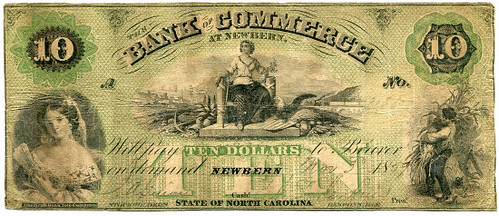
Bank of Commerce at New Bern. 10 dollars, November 3, 1839
As listed in the literature on banknotes, in the time between 1830 and 1860, New Bern had a total of six banks which illustrate the city’s importance: the Bank of Commerce at Newbern, the Merchants’ Bank of Newbern, the Bank of New Bern, as well as the Second Bank of North Carolina, the Bank of the State of North Carolina, and the State Bank of North Carolina, all of which had branches in New Bern where their own banknotes were issued.
To read the complete article, see:
New Bern
(North Carolina) and its Banknotes as historical testimonies
(www.coinsweekly.com/en/New-Bern-North-Carolina-and-its-Banknotes-as-historical-testimonies/8?&id=545&type=a)

ARTHUR MEYER KAGIN 1919-2005
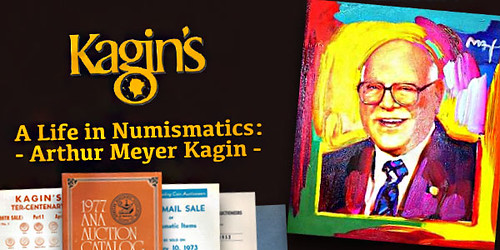
For generations he was among America’s best-known professional numismatists and was widely eulogized upon his death on July 18, 2005. Arthur Meyer Kagin was born in Minneapolis on Nov. 25, 1919. His mother was widowed after the birth of his brother and long-time numismatic partner Paul in 1921. His parents had made the trans-Atlantic voyage from Russia with thousands of other Russian Jews during the great flood tide of immigration before the First World War.
Most Jewish immigrants in that busy era settled in the East, notably in New York, but a number of more adventurous families settled in the Midwest, in cities such as Chicago and Milwaukee. Art’s mother went even further west, marrying a man named Schreiber in Omaha, Nebraska and presenting Art with two half-brothers later associated with the coin dealership to which he devoted his life. Since their last name was not Kagin, the Schreibers were not easily identified on the show circuit as family, often a useful situation.
Art was fond of telling the story of his introduction to the world of coins in 1928. He and each of his four brothers had separate corners where they each sold newspapers and magazines. Art told the story that once an older lady paid him with an 1883 No Cents Liberty head “V” nickel with instructions to keep it safe as it would one day be worth far more than five cents, since it lacked the word ‘cents’. This anecdote was the origin of the cryptic “Art Kagin – since 1928” that appeared for decades under his photograph in Kagin ads in The Numismatist and Numismatic Scrapbook magazines.
Art took a momentous step at age 13, going to work for R.O. Hollinbeck Stamp & Coin in Minneapolis in 1933. Starting as a weekend and summer worker, he went full time in 1935. He rose with amazing speed, assuming heavy responsibilities for a teenager, opening Hollinbeck stores in Omaha and in 1936 in Des Moines, Iowa, where he would remain for a lifetime.
Des Moines was a city of good size, a state capital and railroad hub. It was also a growing business and financial center, home to so many insurance companies that it drew the nickname “the Hartford of the West.” Cost of living was more reasonable than New York and in short order, Art Kagin placed it on the numismatic map.
The Great Depression launched thousands of Americans into coin collecting, especially after J.K. Post of Neenah, Wisconsin, created the first “penny boards” later acquired and perfected by Whitman Publishing of Racine. However dismal the economy might be, nearly everyone could set aside a few Lincoln cents to fill the holes in these inexpensive boards and resell the filled boards to local coin dealers.
Art’s Des Moines store sold more than 50,000 boards annually and distributed thousands more through five-and-ten-cent stores, even barber shops and drug stores. Iowa coin clubs now proliferated from zero in the 1920’s to 20 in 1938, when the Iowa Numismatic Association was formed as the first state organization in the U.S. In 1940 the Central States Numismatic Society was created with Art’s active participation.
Art’s younger brother Paul joined the firm in 1940, but the name Hollinbeck Stamp and Coin Company continued to be used for decades after sale of the firm to the Kagins. In part this name was preserved for its familiarity to customers, but there was a second reason relating to a dark reality in American life at that time: it didn’t “sound Jewish.” Anti-Semitism was a pervasive undercurrent in pre-war America and there were many businesses whose names were chosen with this in mind.
Art’s youngest son Don joined the firm full time in 1972. The year 1973 saw far-reaching change. What was billed as the “Ter-Centenary Sale, Part I” in April included a set of pale red U.S. gold dollar photos on the front cover. The firm name is given as Hollinbeck KAGIN Coin Company and “Meet the Catalogers” now includes a third photo, Don Kagin. There are still no lot photos inside the 64 page catalog.
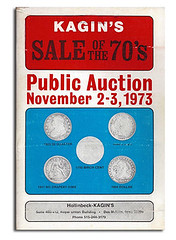 The Nov. 2-3, 1973 [sale] introduced a revolution, billed as Kagin’s Sale of the 70’s, Public Auction with three-color cover bearing
halftones of five U.S. rarities. The text now explodes with a variety of typefaces, light- and boldface, plain and italic, liberally sprinkled with
exclamation points like buckshot for added emphasis.
The Nov. 2-3, 1973 [sale] introduced a revolution, billed as Kagin’s Sale of the 70’s, Public Auction with three-color cover bearing
halftones of five U.S. rarities. The text now explodes with a variety of typefaces, light- and boldface, plain and italic, liberally sprinkled with
exclamation points like buckshot for added emphasis.
The November sale was held in Harrisburg, Pa., at the convention of the Middle Atlantic Numismatic Association (MANA). For the first time, seven black and white plates of exceptionally poor visual quality were included along with a very few dropped-in photos “of the actual items sold.”
Highlights included a rare 1841 No Drapery dime, 1792 Birch Cent and an 1894-S Barber Dime and a silver plated copper electrotype 1804 Silver Dollar made in the Philadelphia mint by W.E. DuBois.
To read the complete article, see:
A Life in Numismatics – Arthur Meyer Kagin
(www.coinweek.com/expert-columns/a-life-in-numismatics-arthur-meyer-kagin/)
CIRCUIT REJECTS SWOGER'S SUIT OVER BRASHER DOUBLOON
The former owners of a Revolutionary-era coin worth millions of dollars owe nothing to a coin expert who claims they agreed to pay him for information that could prove its value to be far greater than the amount they paid, the Ninth U.S. Circuit Court of Appeals ruled yesterday.
The panel affirmed a summary judgment in favor of rare coin dealers Steven Contursi of Dana Point and Donald Kagin of Tiburon. They agreed with District Judge Cormac Carney of the Central District of California that information provided by William Swoger, who claimed that the “Punch on Breast” Brasher Doubloon was the first coin minted under an act of the U.S. Congress, was worthless because the act he cited didn’t apply to the coin.
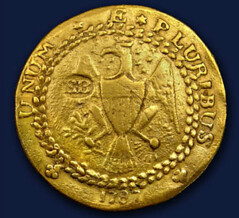 Ephraim Brasher, a New York City gold- and silversmith said to have lived next door to George Washington minted several gold coins,
apparently beginning in 1787 when the American republic was being formed.
Ephraim Brasher, a New York City gold- and silversmith said to have lived next door to George Washington minted several gold coins,
apparently beginning in 1787 when the American republic was being formed.
A handful of the coins remain today. All of them display an eagle on one side, and all have value. But the coin that spawned the litigation was unique in that Brasher—for reasons lost to history—countermarked his initials on the breast of the eagle rather than on its wing.
‘Act of Congress’
Swoger, whom the defendants acknowledged to be an expert in the field, informed the plaintiffs that he had proof that their coin was “the
first United States Coin issued for circulation, and was issued…under authority of [a]n Act of Congress.”
That act was “An Act Regulating Foreign Coins, and For Other Purposes,” ch.5, 1 Stat. 300 (1793.) Others had suggested that the particular coin was minted earlier.
In his complaint, Swoger said he contacted Kagin in early 2009 and told him he could prove the coin was minted and circulated under the act. Kagin, he said, suggested the information was worth $250,000, to which he responded that the true figure was double that. Two months later, during a meeting at a trade show, Kagin insisted that Swoger provide proof.
Heavier Coin
Swoger provided the proof, he claimed, by showing that the coin was fractionally heavier than the others and made to conform to the act,
which provided for Spanish and Spanish colonial coins to pass at 27.4 grains per dollar. The Brasher Doubloon was a $15 coin, and thus
should weigh 411 grains, and the plaintiffs’ coin weighed 410.5 grains, so it must have been struck “pursuant to the Act,” Swoger declared.
The defendants refused to pay, and Swoger sued.
While the suit was pending in district court, Contursi told a reporter by email that the suit was “utterly frivolous” and that he and Kagin “never sought anything from Mr. Swoger regarding the Brasher Doubloon and never benefited in any way from any information he volunteered to us. “
Swoger pled causes of action for quantum meruit, fraud, breach of contract, constructive trust, and misappropriation of trade secrets. In granting summary judgment, Carney concluded that each of the claims required proof that the coin was actually struck pursuant to the act, and that Swoger couldn’t prove that because the act only applied to foreign coins, not to the Brasher Doubloon minted in New York. He also said the information Swoger provided was already known to the defendants or publicly available.
Court’s Opinion
Judge Milan D. Smith Jr., writing for the Ninth Circuit, said the district judge was correct about the 1793 act, noting that “did not
mention domestic goldsmiths like Brasher, let alone authorize them to mint gold coins,” so the doubloon could not have been legal tender
under the act.
He also rejected a theory advanced by the plaintiff for the first time in response to the summary judgment motion, that coin could be used in commerce as long as it was struck to conform to the weight specified in the act. “That a coin was used as a medium of exchange does not make it legal tender,” the judge wrote.
Judge N. Randy Smith and visiting Senior District Judge Joan H. Lefkow of the Northern District of Illinois concurred in the opinion.
The case is Swoger v. Rare Coin Wholesalers, 13-56501.
To read the complete article, see:
Ninth Circuit Rejects Coin Expert’s Suit Over Rare Doubloon
(http://www.metnews.com/articles/2015/swog100915.htm)
MORE ON THE NEW ORLEANS MINT
For anyone who’s interested in a blow-by-blow description of some of the events in New Orleans in early 1861, I highly recommend Secretary Dix’s report to Congress on the seizure of the New Orleans Mint (and the collection of import duties and the fate of the revenue cutters), which was printed as House Executive Document No. 72, 36th Congress, 2nd Session and is available via Google Books.
The letter that supplied the information that appeared in last week’s issue of The E-Sylum is included in the Document, as Attachment A.
 Some additional information on the events of the period is available in the Memoirs of John Adams Dix, Volume I, which is also
available via Google Books. The section that deals with early 1861 begins on page 362.
Some additional information on the events of the period is available in the Memoirs of John Adams Dix, Volume I, which is also
available via Google Books. The section that deals with early 1861 begins on page 362.
It is fortunate for future coin collectors that Director Snowden’s recommendation to repudiate all of the 1861 coinage from New Orleans was not adopted.
Perhaps it wasn’t adopted because an attempt to discredit the coinage from one mint might have caused America’s commercial partners to question the 1861 coinage from the other American mints or, even, past coinage from the New Orleans Mint and, therefore, the repudiation might have ended up causing more difficulties than it was intended to solve.
Also, it’s interesting to note that James Pollock, who succeeded James Snowden as Mint Director, took a less adversarial position on the New Orleans coinage in his Annual Report for the Fiscal Year Ending June 30, 1861 (dated October 10, 1861) and a somewhat milder tone in his report for Fiscal 1862 (dated October 27, 1862).
To read the complete article, see:
House Executive Document No. 72
To read the complete article, see:
MEMOIRS OF JOHN ADAMS DIX
To read the earlier E-Sylum article, see:
THE NEW ORLEANS MINT UNDER SOUTHERN FLAGS
(www.coinbooks.org/esylum_v18n40a14.html)
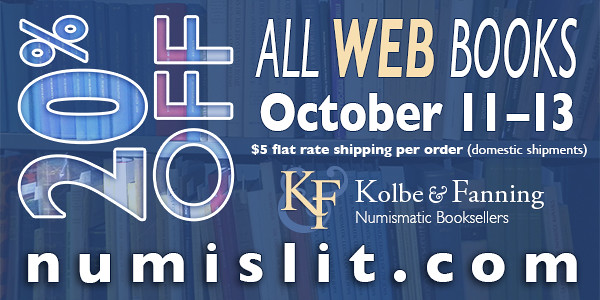
ALVIN JOHN FINK (1875-1965)
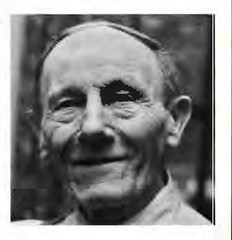 Alvin John Fink (1875-1965), was born in Ohio on August 9, 1875 the son of John Finke (1850-1916), a bookkeeper from Oldenburg, Germany and
Catherine "Caroline" Nipgen Finke (1850-1931) from Baden, Germany. Apparently he changed the spelling of his name to Fink randomly as in
1909 in The Numismatist since he is listed as Finke in the 1910 City Directory, when he worked as a letter carrier, and even later on
in 1931 and 1932 listed as Finke.
Alvin John Fink (1875-1965), was born in Ohio on August 9, 1875 the son of John Finke (1850-1916), a bookkeeper from Oldenburg, Germany and
Catherine "Caroline" Nipgen Finke (1850-1931) from Baden, Germany. Apparently he changed the spelling of his name to Fink randomly as in
1909 in The Numismatist since he is listed as Finke in the 1910 City Directory, when he worked as a letter carrier, and even later on
in 1931 and 1932 listed as Finke.
He was a college graduate from St. Mary's Institute (now the University of Dayton), class of 1891, at the age of fifteen. Later he attended Georgetown University where he played baseball and was an outstanding pitcher. In 1892, he received an award in Grammar. In 1893 and in 1896, he performed a German musical recital. In 1894, he was awarded the Hoffman Mathematica Medal at Georgetown. It was at New York University Graduate School when he began collecting coins circa 1899 at the age of twenty-three.
In 1911 he called his business Fink's Curio Store, Dayton, Ohio and he conducted three coin and curio auction sales.
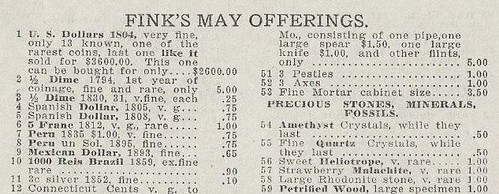
In the May 1912 issue of Fink's Offerings he had listed an 1804 Silver Dollar for sale in VF condition for $2,600.00. The known 1804 Silver Dollars in VF condition are that of the Class I “Cohen Specimen” ex William B. Wetmore sold by S. H. & H. Chapman in June 1906; and the Class III Rosenthal Specimen. Since James H. Manning purchased the Cohen Specimen from the Chapman Brothers' Wetmore sale in June 1906, and James Ellsworth owned the Rosenthal Specimen from 1894 until 1923, which 1804 dollar is this? Keep in mind he eventually is arrested and imprisoned for mail fraud twenty years later in 1931 and 1932.
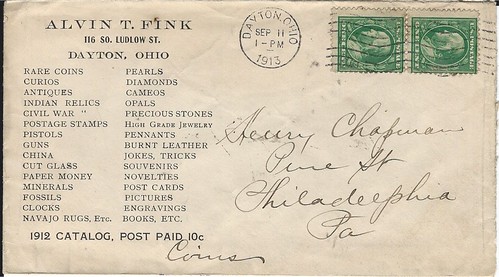
He joined the ANA in 1948 and was given member number 15480. However, his name neither appears in the ANA Membership Directory published in December 1948 nor in any other subsequently.
During the 1950’s he operated his coin business in the lobby of the Dayton YMCA where he was a member and a daily swimmer. At that time he published Fink's Coin Bulletin. During that time Henry Norweb was a frequent correspondent ordering various coins on approval but most were returned.
To read the complete article, see:
FINK, ALVIN
JOHN (https://sites.google.com/site/numismaticmallcom/encyclopedic-dictionary-of-numismatic-biographies/fink-alvin-j)
Chapman Addresses
Regarding a letter to the Chapman Brothers from George McCombe, last week Dave Hirt wrote:
I was interested in the Chapman's address on the letter, of 2043 Tower Street. That was their first address as coin dealers, when they were still really boys. That is not in the Philadelphia business district, but along the Schuylkill River in a section of the city called Manayunk. Perhaps it was their parents' home.
John Lupia writes:
The Chapman Brothers always lived with their parents until their mother died in 1891 and their father, Henry, Sr. died in 1907. When they were young boys they lived at East Walnut Street until Spring 1868 and then moved to 631 Market Street until April 1876 when they moved to 2043 Tower Street.
631 Market street was just a few blocks from Joseph Jacob Mickley, who lived at 927 Market Street. They most probably knew Mickley and were familiar as boys with his coin collection since their father Henry Chapman, Sr. worked as an exchange broker at that time, which was the near equivalent in 1868 to being a coin dealer. The young Chapman boys who worked for Col. John W. Haseltine, E. L. Mason's former partner, beginning in 1875 were only following in father's footsteps.
To read the earlier E-Sylum article, see:
MORE ON GEORGE THOMAS MCCOMBE, JR.
(www.coinbooks.org/esylum_v18n40a15.html)
WAYNE'S NUMISMATIC DIARY: OCTOBER 11, 2015

Tuesday October 6th, 2015 brought me a special treat. I'd been invited to dinner by Tom Uram of the Pennsylvania Association of Numismatists. He was in D.C. for a meeting of the Citizens Coinage Advisory Committee (CCAC), and many of the committee members would be there. E-Sylum readers know I'm an amateur coin design critic, so this would be a real treat.
I knew some members of the committee by name, but other than Tom and Roger Burdette (who served an earlier term), I'd never met them in person.
Traffic was light and I arrived early and parked in the Embassy Row hotel off Dupont Circle. With time to kill I walked around the neighborhood a bit. I came up from behind on a bronze statue of a bald man and wondered who it was. When I got closer I realized it was Mahatma Ghandi. 'The Indian embassy can't be far away", I thought, and I was right. Squinting to read nearby building signs I spotted the Indian Embassy. A tall man in a blazing white turban was manning the front desk. The Indonesian Embassy was across the street from the hotel.
Just a block down Massachusetts Avenue was the headquarters of The Society of the Cincinnati that we wrote about last week. Unfortunately its museum and library close at 4pm and it was now about 6.
When Tom arrived he introduced me to his travelling companion, his brother Jim. They'd driven down from Washington, PA. After checking in they joined me at a table in the lobby bar, where I was already working on a glass of cabernet. I checked my email and saw we had a new subscriber - Mary Lannin.
CCAC members began trickling in, and soon Tom was introducing me to the CCAC Chair, Mary Lannin. She sat next to me and was a delightful dinner companion. If anyone had been thinking that the CCAC members would turn out to be a bunch of fusty fuddy-duddies judging from on high with noses upraised, think again. Mary and the whole CCAC gang were the warmest, friendliest bunch of people one could ask for. I had a wonderful time.
Mary is from San Rafael, California and collects and researches Seleucid Coinage. She is a member of the American Numismatic Society and American Numismatic Association, the San Francisco Ancient Numismatic Society, the Pacific Coast Numismatic Society, and other coin organizations.
She told me about people and happenings in her local coin clubs and in turn I told her about my northern Virginia numismatic social group Nummis Nova and the Pittsburgh group it was modelled on, The Sphinx Society. What's so great about these groups is that there are no officers, no committees, no reading of the minutes - no nothin' except the fun part of the hobby - socializing with fellow collectors and looking at coins (just like this gathering).
We also talked about mentoring not-so-young-anymore young numismatists. Some Nummis Nova friends and I are mulling ideas for introductions and events to help take younger numismatists to the next level of the hobby. In addition to one-on-one mentoring, we'd like to expose them to numismatic libraries like mine, big coin shows like the Whitman Baltimore events, museum collections like the Smithsonian and research hubs like the National Archives. We're blessed to live in the Washington D.C. area where so many national sites are right in our back yard.
Accompanying Mary was Jeanne Stevens-Sollman, an artist from Central Pennsylvania. Her medallic sculpture has been exhibited throughout the United States and is in the collections of museums throughout the United States and Europe.
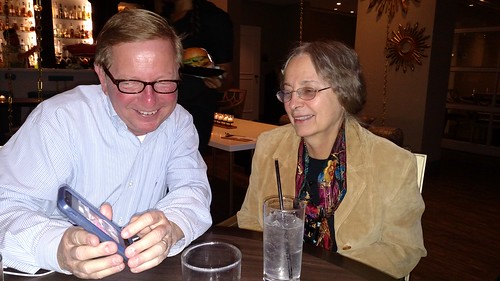
Tom Uram showing Jeanne a coin design
Jeanne adds:
While my passion is in sculpture and medals, coins are a very close second! As a medallist and US Delegate to FIDEM (Federation Internationale de la Medaille) my interest lies in developing coinage that will be extraordinary in design attracting more folks to the hobby and inspiring the younger generation to see coins in a new light.
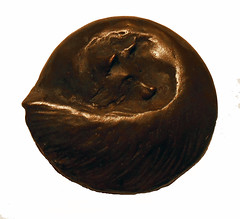
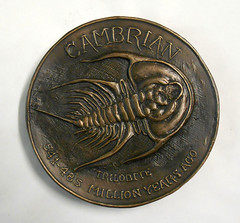
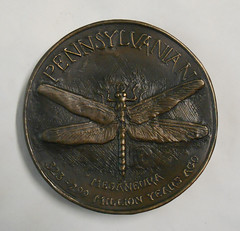
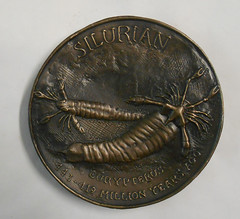
Jeanne provided images of a some nice examples of her work (above). The first is titled "Quietly Watching Fox." Her Fossil Medallions are installed in the Children's Garden at Penn State's Arboretum along with some of her sculptures.
Mike Moran of Lexington, KY ended up sitting to my left. I was familiar with his writing but we'd never met. His first book was Striking Change: The Great Artistic Collaboration of Theodore Roosevelt and Augustus Saint-Gaudens. He's working on a new one, also with Whitman Publishing, so stay tuned for more information. I told him about The E-Sylum and he's now a subscriber, too.
I was delighted when artist Heidi Wastweet arrived. We'd never met, but I'm a huge fan of her medallic work. Roger Burdette had clued me in to her a couple years ago and I wrote some E-Sylum articles about her medals. She was chief engraver for Sunshine Mint and lead designer/sculptor for Global Mint. In 2001 she opened her own studio and relocated from Idaho to Seattle, Washington in 2002.
Heidi brought one of her medals to show us. Titled "Becoming Beatrice", it's about the great, unrequited love of Dante. From Wikipedia:
According to Dante, he first met Beatrice when his father took him to the Portinari house for a May Day party. At the time, Beatrice was eight years old, a year younger than Dante. Dante was instantly taken with her and remained so throughout her life even though she married another man, banker Simone dei Bardi, in 1287. Beatrice died three years after the marriage in June 1290 at the age of 24. Dante continued to hold an abiding love and respect for the woman after her death, even after he married Gemma Donati in 1285 and had children. After Beatrice's death, Dante withdrew into intense study and began composing poems dedicated to her memory. The collection of these poems, along with others he had previously written in his journal in awe of Beatrice, became La Vita Nuova.
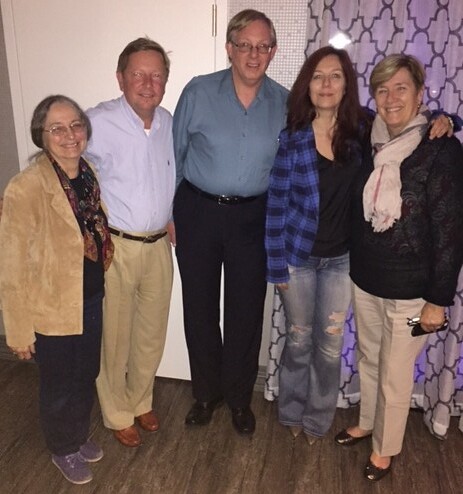
Jeanne Stevens-Sollman, Tom Uram, Wayne Homren, Heidi Wastweet, Mary Lannin
Other CCAC members attending the dinner were Erik Jansen and Gary Marks. They were at the far end of the table, and I didn't get a chance to speak much with them. Gary is the City Manager in Lebanon, Oregon. From his bio:
While working as the City Manager of the City of Whitefish, Montana, Mr. Marks served as a Commissioner of the Montana Quarter Design Selection Commission and subsequently as the Master of Ceremonies at the official launching ceremony for the 2007 Montana Quarter Dollar. He also served as Executive Director of the Whitefish Centennial Medallion Commission and as Chairman of the Whitefish Bronze Sculpture Committee. Mr. Marks has been a dedicated numismatist for over 40 years.
As an avid artist, Mr. Marks works in multiple mediums, including oil paint on canvas where he produces colorful abstracts, large-sized abstract sculptures using various wooden materials and medallic designs, some of which have been privately minted as bronze and silver medallions.
From Erik's bio:
Mr. Jansen is the Chief Executive Officer and co-founder of a medical device firm in Mercer Island, Washington. In addition to his significant business experience, Mr. Jansen has a long history of successful non-profit and philanthropic work, especially in the area of education. He is a life-long coin collector and has a deep knowledge of coinage and many of the numismatic-related issues facing the CCAC and the United States Mint.
An accomplished bunch to be sure, but as I said, not a fusty one. Here's Erik photobombing a group of us trying to take another picture.
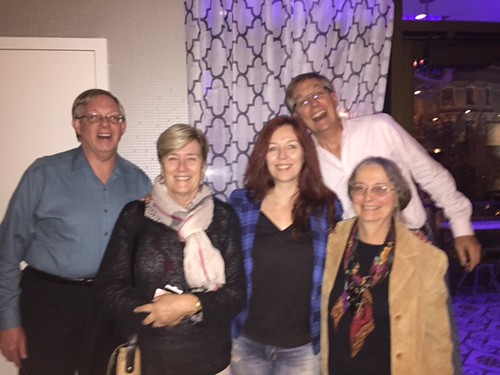
Wayne, Mary, Heidi, Erik, Jeanne
I had a nice talk with Heidi before leaving. She's an E-Sylum subscriber despite her more narrow interest in the artistic side of the hobby. She asked if I would be coming to Wednesday's CCAC meeting. I wasn't aware they were open to the public, but many sessions are. I had to be back at work, but I would encourage readers to take advantage of the opportunity.
I thanked Tom once again for the invitation. We talked some more about programs for not-so-young young numismatists, and he offered to help arrange a visit to the Mint Headquarters and a meeting with the Director of the Mint. It would be hard to top that, but we'll try. He also broached the idea of having a combined dinner sometime with the CCAC and Nummis Nova.
It was a marvelous evening. GPS got me out of town along an unfamiliar route, but I made it home by 11pm. Whew. Sometimes it seems there aren't too many people in our hobby that I haven't met yet, but there are always more, and it was an honor and privilege to meet some of the hardworking men and women who help create our nation's coins and medals. Thanks for all that you do.
To read CCAC member bios, see:
http://ccac.gov/aboutUs/members.cfm
To read articles about this week's meeting, see:
Proposed designs get
CCAC nod for two Code Talkers congressional gold medals
(www.coinworld.com/news/us-coins/2015/10/designs-get-ccac-nod-for-two-code-talkers-gold-medals.html#)
2017 America the Beautiful Design
Recommendations (http://news.coinupdate.com/2017-america-the-beautiful-design-recommendations/)
To read the earlier E-Sylum articles, see:
ARTICLE HIGHLIGHTS COIN DESIGNER HEIDI WASTWEET
(www.coinbooks.org/esylum_v14n31a08.html)
HEIDI WASTWEET'S FREEDOM GIRL (www.coinbooks.org/esylum_v16n12a22.html)
MORE ON HEIDI WASTWEET'S FREEDOM GIRL
(www.coinbooks.org/esylum_v16n13a15.html)
BEHIND THE SCENES: WORKING ON THE E-SYLUM
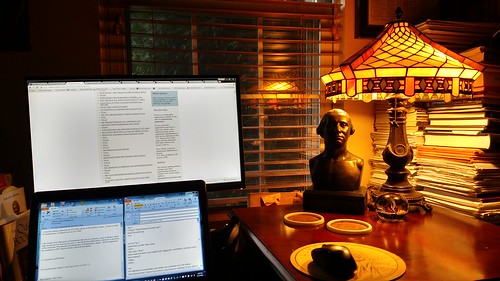
It takes a lot of time to pull together The E-Sylum each week, but I've learned to be fairly efficient about it. Last year I told my wife I wanted an external monitor for my laptop for Christmas, and the extra screen real estate has been a godsend. I'll never go back. Here's a picture I took last weekend while working on the October 4, 2015 issue.
A draft of the issue is shown on the top screen. You're looking at the table of contents, and you can see that several articles have complete headlines, while others just have placeholders. I create a template at the beginning of each week with the ads laid out and placeholders for the articles in between. Then I spend the rest of the week filling it up with content.
On the laptop screen below are two windows side-by-side. On the left is the latest email message I'm reading. On the right is the raw text of the issue. To publish a reader's comment, I'll cut text from the message on the left and paste it into the draft on the right, surrounded by the HTML codes to display it as a quote. There are only a handful of codes I use regularly, such as quotes, Editor comment boxes, italics and bold.
I use Microsoft Outlook to read my email, and I set it up so I have a separate folder for all of my incoming E-Sylum mail. When I'm done with a message, I move it to a "done" folder. I have Outlook configured to automatically bring up the next email. Over the weekend I basically just plow thru that folder until I'm out of messages.
The only problem is that it's like trying to empty a bathtub while the faucet is still running. New emails come in sometimes as fast or faster than I can empty the folder. Often I work through the folder from newest to oldest, which can help when readers send me multiple emails on the same topic. That way I work on the latest version and can often just file or delete the earlier versions. To mix it up I also work sometimes beginning with the oldest messages. And when I feel overwhelmed I'll look at the folder directly and pull out priority items I want to make sure to include.
That top screen is a browser window. If you look close you'll see I have a lot of tabs open. Several of these browser tabs are set up to open automatically when the browser starts up. So whenever I'm on my computer I've always got quick access to the E-Sylum archive, the email list management page, our Flickr image archive and other handy web pages. I never have to remember or dig around for web addresses or logins. Whatever I need is already there. Cut. Paste. Click. Done. Next.
George keeps me company, although I'm rarely alone. My office is connected to our living room, and my wife and one or more kids are often in there staring at their own screens, whether it’s the TV or their phones or tablets. That's a Sacajawea Dollar mouse pad from the U.S. Mint that David Gladfelter sent me one time. Thanks! Keep those emails coming, folks. Your input is vital - without you I'd have to make all this stuff up, and then we'd be the Weekly World News..
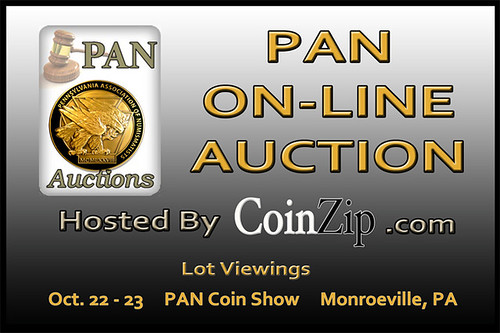
SELECTIONS FROM ERIC P. NEWMAN COLLECTION PART VII
The Selections from the Eric P. Newman Collection Part VII sale is taking place this month in Dallas. The Signature Session will be held on Wednesday, October 21. The Internet Sessions will be held Friday, October 23 and Saturday, October 24. The printable catalogs for are available on the Heritage Auctions website. Those interested in the Internet catalog are invited to click on the link: http://www1.heritagestatic.com/c/d/newman-7-currency-nonfloor-catalog.pdf. Featured examples from the over 1,400 additional, highly collectible notes within this catalog are below.
Items being sold are from the extensive collection of Eric P. Newman Numismatic Education Society (a Missouri not-for-profit corporation) and have been assembled over a period of 90 years. Proceeds of the sale of all items will be used exclusively for supplementing the Society’s museum operations and scholarly numismatic research efforts and for the benefit of other not-for-profit institutions selected by Eric P. Newman Numismatic Education Society for public benefit.
Lot 18947: North Carolina April 2, 1776 $10 Peacock

High Grade $10 Peacock
North Carolina April 2, 1776 $10 Peacock Fr. NC-166b. PCGS About New 53 Apparent.
There were two different $10 vignette types, Cupid and Peacock. This is a crisp note. It is lightly folded and shows only petty flaws. Very deeply inked and showing strong vignette details. Except for one, the signatures are bold. Noted with "Small Edge Splits; Minor Mounting Remnants on Back."
To read the complete lot description, see:
North Carolina April 2, 1776 $10 Peacock Fr. NC-166b. PCGS About New 53
(http://currency.ha.com/itm/colonial-notes/north-carolina-april-2-1776-10-peacock-fr-nc-166b-pcgs-about-new-53-apparent/a/3539-18947.s?ic4=ListView-Thumbnail-071515)
Lot 19075: Continental Currency January 14, 1779 $20
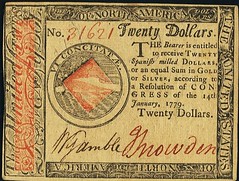
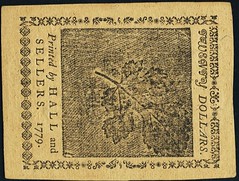
Bold January 14, 1779 $20 Note
Continental Currency January 14, 1779 $20 Fr. CC-92. PCGS Choice New 63PPQ.
This projects very boldly and would make a superb resolution set type note. The very deep black border and text inking contrast with the red face color beautifully. The back is also gorgeously printed, and face-to-back registration is perfect. A close left face margin is the only quibble. Everything else is immaculate, and the estimate may be conservative.
To read the complete lot description, see:
Continental Currency January 14, 1779 $20 Fr. CC-92.
(http://currency.ha.com/itm/colonial-notes/continental-currency-january-14-1779-20-fr-cc-92-pcgs-choice-new-63ppq/a/3539-19075.s?ic4=ListView-Thumbnail-071515)
Lot 19368: Leavenworth, KS - City of Leavenworth $2
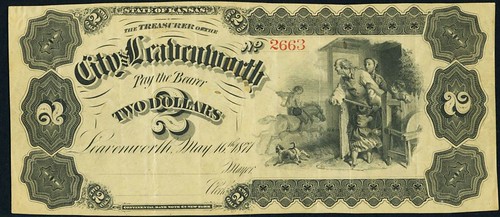
Distinctive Continental Bank Note Co. Engraving
Leavenworth, KS - City of Leavenworth $2 May 16, 1871 Whitfield 276 Remainder. PCGS Very Fine 35.
In this second denomination, a hair-raising scene, The War Alarm, occupies most of the right side of this note. As an armed patriot rides by, the farm family, led by the man of the house, exits the home to heed the alarm. The dog is in pursuit and the anxious family members, especially his young daughter, attempt to prevent him from following with his gun and powder horn. A beautiful array of intricate dies forms the border. The green security back has three large dies with outlined denomination elements and the title is outlined on green lathe work banners. This has a stunning look and the Rarity-4 (26-50 known) includes nearly all vastly inferior examples. This is a crisp, bold and vibrant note for a top collection.
To read the complete lot description, see:
Leavenworth, KS - City of Leavenworth $2 May 16, 1871 Whitfield 276 Remainder.
(http://currency.ha.com/itm/obsolete-banknotes/leavenworth-ks-city-of-leavenworth-2-may-16-1871-whitfield-276-remainder-pcgs-very-fine-35/a/3539-19368.s?ic4=ListView-Thumbnail-071515)
Lot 19990: Charleston, SC - Bank of Charleston $5 Jan. 26, 1858
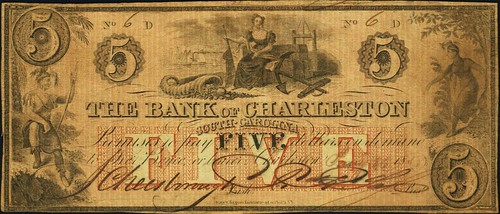
Issued "Indian Prince and Princess" Note
Charleston, SC - Bank of Charleston $5 Jan. 26, 1858 SC-10 G2b, Sheheen 51. PCGS Very Fine 20.
This is a fully issued "Indian Prince and Princess" type engraved and printed by Draper, Toppan, Longacre & Co. The light red lace tint plate was added to late notes. At top center, and allegorical female, representing several themes, sits on bales at a wharf; an anchor and a cornucopia are nearby. In her right hand she holds a rudder. Charming complementary vignettes are at the ends. At the left, the prince rests at the riverbank with his elbow on one knee, appearing to wait for his princess, who is pictured at the right end across the river. The right end vignette was used by the Confederate States of America to create the Type 35 "Indian Princess" note at Hoyer & Ludwig in Richmond. Very low number 6 note and "D" plate position. A bold and superior grade example.
To read the complete lot description, see:
Charleston, SC - Bank of Charleston $5 Jan. 26, 1858 SC-10 G2b, Sheheen 51.
(http://currency.ha.com/itm/obsolete-banknotes/charleston-sc-bank-of-charleston-5-jan-26-1858-sc-10-g2b-sheheen-51-pcgs-very-fine-20/a/3539-19990.s?ic4=ListView-Thumbnail-071515)
Lot 20215: Confederate States of America - T39 $100 1862
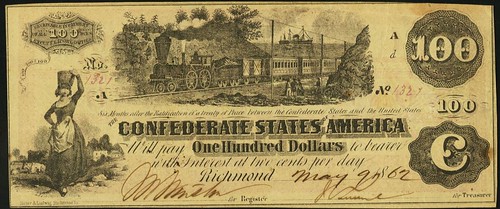
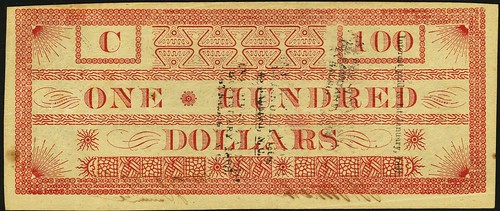
Rare "Red Fantasy Back" T39 $100-Once a Rare Confederate "Type"
Confederate States of America - T39 $100 1862 PF-2, Cr. 289, Cr. UNL. "Fantasy Back." PCGS About New 53.
Confederate T39 and T40 $100 "Trains" are a specialty with the most varieties and ephemeral associations. J.T. Paterson & Co., Columbia, S.C. printed these types. This is the standard design, showing a train heading west with steam rising straight up from the locomotive at top center. A milkmaid balancing her pail on her head is at lower left. Plate Ad, serial number 1321.
The note has an added red "Funny Back" that was considered contemporary and proper in the 1880s. According to some auction records from the late 19th century, this red-back "type" was considered rarer than T1 or T2. This is a choice example and very collectible. This is a key "Funny" or fantasy back type due to its former status over a century ago.
To read the complete lot description, see:
Confederate States of America - T39 $100 1862 PF-2, Cr. 289, Cr. UNL. "Fantasy Back."
(http://currency.ha.com/itm/confederate-notes/confederate-states-of-america-t39-100-1862-pf-2-cr-289-cr-unl-fantasy-back-pcgs-about-new-53/a/3539-20215.s?ic4=ListView-Thumbnail-071515)
ISIS MINT FOUND IN TURKEY
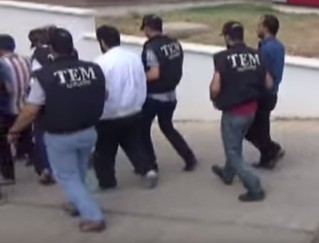 Six people linked to Islamic State have been arrested on charges of illegally minting coins in the Turkish province of Gaziantep, according
to the local governor's office. It comes just one month after the group released a propaganda video showing off its currency. The Gaziantep
Police Department's counter-terrorism unit on Wednesday confiscated minted coins, 12 coining blocks, 56 coins in four sizes, and other materials
used in the minting of coins, Turkish daily Milliyet reported Wednesday.
Six people linked to Islamic State have been arrested on charges of illegally minting coins in the Turkish province of Gaziantep, according
to the local governor's office. It comes just one month after the group released a propaganda video showing off its currency. The Gaziantep
Police Department's counter-terrorism unit on Wednesday confiscated minted coins, 12 coining blocks, 56 coins in four sizes, and other materials
used in the minting of coins, Turkish daily Milliyet reported Wednesday.
A video posted online reportedly shows the confiscated coins and equipment.
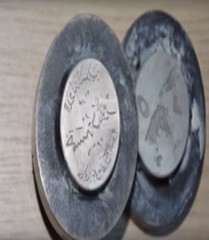 The Gaziantep Governor's Office said it had acted on a tipoff about members of Islamic State (formerly ISIS/ISIL) establishing a mint
to coin its own money.
The Gaziantep Governor's Office said it had acted on a tipoff about members of Islamic State (formerly ISIS/ISIL) establishing a mint
to coin its own money.
It comes just one month after ISIS released a propaganda video showing images allegedly showing the minting and circulation of the
group's currency.

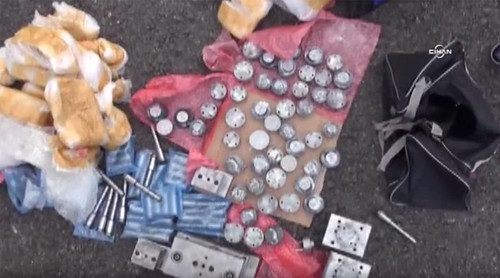
To read the complete article, see:
ISIS currency mint found in Turkey, 6 arrested
(www.rt.com/news/317931-isis-mint-currency-turkey/)
To read the complete Times article, see:
Turkish police raid illicit mint making Isis currency
(www.thetimes.co.uk/tto/news/world/europe/article4579172.ece)
To read the earlier E-Sylum articles, see:
ISIS TO ISSUE ITS OWN COINAGE? (www.coinbooks.org/esylum_v17n47a25.html)
COIN WORLD: ISIS COINAGE IMPROBABLE (www.coinbooks.org/esylum_v17n48a22.html)
ARE ISIS COINS BEING MINTED IN CHINA?
(www.coinbooks.org/esylum_v18n01a26.html)
IMAGES SURFACE OF PURPORTED ISIS COINS
(www.coinbooks.org/esylum_v18n26a25.html)
ISIS VIDEO SHOWS GOLD DINARS BEING MINTED
(www.coinbooks.org/esylum_v18n35a25.html)
CONFLICT ANTIQUITIES AND THE ANS
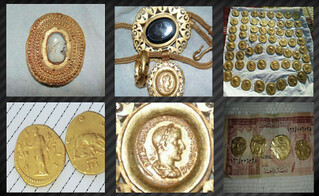 Ute Wartenberg Kagan, Executive Director of the American Numismatic Society, spoke about collecting coins and the conflict in Syria as part
of a larger program about conflict antiquities last week. The event was sponsored by the United States Department of State’s Bureau of Educational
and Cultural Affairs, and was hosted by the Metropolitan Museum of Art in New York City on September 29th. As described by the State Department, the
panel discussions “highlighted the connection between ISIL’s looting and trafficking of antiquities and the financing of terrorist operations . . .
and forged public-private education and advocacy campaigns about best practices for museums, collectors, and auction houses around the world.”
Ute Wartenberg Kagan, Executive Director of the American Numismatic Society, spoke about collecting coins and the conflict in Syria as part
of a larger program about conflict antiquities last week. The event was sponsored by the United States Department of State’s Bureau of Educational
and Cultural Affairs, and was hosted by the Metropolitan Museum of Art in New York City on September 29th. As described by the State Department, the
panel discussions “highlighted the connection between ISIL’s looting and trafficking of antiquities and the financing of terrorist operations . . .
and forged public-private education and advocacy campaigns about best practices for museums, collectors, and auction houses around the world.”
The first of two panels featured officials from the State Department, United Nations, Department of Homeland Security, and the FBI, as well as the Michael Danti of the American Schools for Oriental Research. The State Department for the first time presented publicly concrete evidence that ISIL is systematically looting archaeological sites in Syria, and is profiting from selling the antiquities on the black market.
This is a topic that was previously explored on this blog, but the government’s presentation leaves no doubt that there has been a very organized and focused effort by ISIL to profit from the trade in antiquities. The full PDF presentation including photographic documentation of the evidence can be viewed and downloaded here.
The second panel hosted six speakers from the ANS, CBS News, the Metropolitan Museum of Art, the Pergamon Museum, Christie’s, and eBay to discuss best-practices and communication regarding exercising thorough due diligence when buying and selling antiquities. Wartenberg’s presentation focused on the American Numismatic Society’s guidelines for the acquisition of coins, and its recommendations to its Members who collect about how to protect themselves from buying potentially looted coins. The ANS promotes and supports ethical coin collecting, but reminds buyers to exercise both caution and common sense when considering purchasing fresh coins from Syria and surrounding regions.
Throughout 2015 and 2016, the ANS will host various events during which Members will be given the opportunity to learn more about these issues, and to discuss them with the senior staff and administration. Details about these events will be posted on the ANS’s Events and Exhibitions webpage.
Lastly, we would like to underscore Wartenberg’s concluding remarks that the American Numismatic Society’s curatorial staff is committed to taking a more active role in raising awareness about the destruction of national heritage and the looting of antiquities, including coins. As she notes, much of this damage will be impossible to undo, but we will nevertheless work to “engage collectors, dealers, archaeologists, legislators, and law enforcement officials in a dialogue that creates a 21st-century academic discipline and hobby for serious coin collectors as it should be undertaken.”
To read the complete article, see:
CONFLICT ANTIQUITIES AND THE ANS
(www.anspocketchange.org/conflict-antiquities-and-the-ans/)
THE BOOK BAZARRE
JULIA MAESA: THE FIRST FEMALE CAESAR
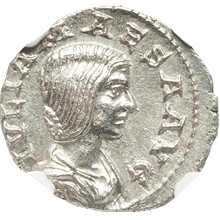 The later Severan dynasty, commencing with the infamous reign of Elagabalus, represents one of the few times in Roman history when women
wielded true power. This ascendency was largely due to the machinations of one Julia Maesa, sister of the Roman Empress Julia Domna, who had been the
wife of Septimius Severus and mother of Caracalla.
The later Severan dynasty, commencing with the infamous reign of Elagabalus, represents one of the few times in Roman history when women
wielded true power. This ascendency was largely due to the machinations of one Julia Maesa, sister of the Roman Empress Julia Domna, who had been the
wife of Septimius Severus and mother of Caracalla.
The daughter of the hereditary priest-ruler of Emesa, Maesa was likely born around AD 165, a few years before her sister Domna. The family was wealthy and influential in the Roman East, and both Maesa and Domna married well: Maesa was wed to a wealthy knight and important local magistrate, Julius Avitus Alexianus, while Domna became the bride of a rising senator from North Africa, Lucius Septimius Severus. In AD 193, the family's fortunes surged when Severus was proclaimed Emperor and successfully bested all rivals for the throne in a three-year civil war. If they did not reside there already, Maesa and her family moved to Rome and became important members of the regime, with Alexianus being named a senator and serving a consul in AD 200.
But by AD 218, the Severan dynasty's fortunes seemed at a low ebb: Septimius had died in 211, his successor Caracalla had been murdered and replaced by the dull civil servant Macrinus, and Julia Domna had been compelled to return to her Syrian hometown of Emesa, where she succumbed to breast cancer and self-starvation. Perhaps moved to pity by Domna's death, the new Emperor Macrinus allowed Maesa to keep her wealth and property, though he compelled her to move back to Emesa. Both of these calls turned out to be atrocious mistakes.
Maesa was by this time apparently widowed, but she had two daughters, Julia Soaemias and Julia Mamaea, each of whom had also married well and produced male children. Maesa was determined to avenge her sister and restore the Severan-Emesan dynasty to power, and seized upon her 13-year-old grandson Varius Avitus, son of Soaemias, as the means. The boy, who was the hereditary high priest of the god Elagabal, greatly resembled a young Caracalla and Maesa had it put about to the soldiers that he was the emperor's natural son and true successor. That, plus a liberal sprinkling of gold from Maesa's fortune, induced the troops to revolt and proclaim Avitus (now renamed Antoninus, but widely known as Elagabalus after his god) as emperor.
Macrinus tried to crush the rebellion, but he was held in contempt by the soldiers, whose pay he had slashed as an economy measure (another catastrophic mistake). His legions thus fought with little enthusiasm against the Severan rebels. In one battle, Julia Maesa rode a chariot to the front line clad in a helmet and breastplate and personally exhorted her soldiers to victory like a female Julius Caesar. Her soldiers rallied and the spectacle induced the soldiers of Macrinus to switch sides. Macrinus was hunted down and killed.
Maesa, Elagabalus and their retinue made their way slowly to Rome, arriving early in AD 219. The new 14-year-old emperor was greeted by the Roman populace with mixed curiosity, bafflement, amusement, and horror. For in addition to his Syrian birth, Elagabalus was what would today be called "transgendered," an exotic dancer, and totally committed to the orgiastic rites of his cult.
Despite the best efforts of Maesa to contain his behavior, the youthful emperor ran wild and seemed intent on alienating Romans of all classes. He married three times in rapid succession, including a scandalous union with a Vestal Virgin. Athletes, dancers, actors and charioteers reached high office based on their sexual prowess. The populace and soldiery soon became disgusted with their emperor's untethered behavior.
Though Julia Maesa ably guided the reins of government from behind the scenes, she finally decided that he must be replaced to save the dynasty. She induced Elagabalus to adopt her docile other grandson, Mamaea's son Alexander, as Caesar, then coolly arranged for the Praetorians to murder their oddball emperor along with his mother in March, AD 222. Whatever qualms Maesa felt about the deaths of her daughter and grandson she kept to herself. Maesa continued to rule as emperor in all but name under Severus Alexander, who proved an obedient figurehead, until her death in late AD 224, after which her surviving daughter Mamaea stepped seamlessly into her role.
Like the other Severan women, Julia Maesa was honored extensively on the Roman coinage. This denarius, struck during the reign of Elagabalus, shows her has rather more hard-featured than her sister Julia Domna, perhaps reflecting her calculating personality.
HELMSLEY ROMAN COIN HOARD GIVEN TO ARCHIVE
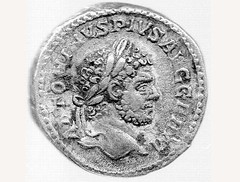 A little-known hoard of rare Roman coins, some of which are believed to be almost 2,000 years old, has been donated to a town's
historical archive.
A little-known hoard of rare Roman coins, some of which are believed to be almost 2,000 years old, has been donated to a town's
historical archive.
The collection, which was unearthed by Richard Frank in Helmsley in 1931 and had been kept by his son, also named Richard Frank, until his death, includes 34 silver Roman denarii, many in good condition, dating from as early as AD69.
A total of 11 different Roman emperors or their wives are represented on the coins, including Marcus Aurelius, who is portrayed in the film Gladiator, Vespasian, Trajan and Septimius Severus.
The coins were identified by Philip Corder, who led the first excavations at the Roman fort at Malton in the 1930s.
Mystery surrounds how the coins came to be hoarded in the town, as other than the remains of one of the most northerly Roman villas in Britain at nearby Beadlam, there is little evidence of Romans settling in the area.
It is believed that the hoard was deposited not much later than AD218 - the date of the latest coin - during the reign of Emporer Severus Alexander, who was assassinated after overseeing the collapse of the monetary economy.
The value of the coins, which have been given to the Helmsley Archive by Mr Frank's family, remains unclear, it is understood the hoard may have been buried as currency depreciated during the third century, before which most Roman coins were struck at Rome.
To read the complete article, see:
(www.darlingtonandstocktontimes.co.uk/news/
13810231.Delight_as_hoard_of_rare_Roman_coins_is_given_to_town_s_archive/)

NUMISMATICS OF THE CRYSTAL PALACE
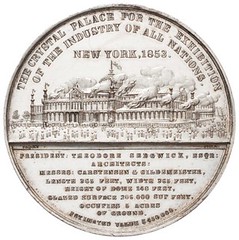 On October 5, 1858, the New York Crystal Palace burned to the ground in just forty minutes after a fire broke out in the northeast corner
of the building just after five o’clock in the evening. The American Institute, a civic organization dedicated to “encouraging and promoting domestic
industry,” was holding its annual fair, and about two thousand visitors were in the building at the time.
On October 5, 1858, the New York Crystal Palace burned to the ground in just forty minutes after a fire broke out in the northeast corner
of the building just after five o’clock in the evening. The American Institute, a civic organization dedicated to “encouraging and promoting domestic
industry,” was holding its annual fair, and about two thousand visitors were in the building at the time.
Although the enormous structure was mostly made of iron and glass, the pitch pine that was used as flooring and in much of the framework “afforded a most inflammable pabulum for the conflagration to feed upon.” In a particularly evocative passage the Herald noted that at one point “the whole palace was like a burning coal, and vomiting up fire at a rate that would have done credit to Vesuvius.” The vivid scene was captured in a hand-colored lithograph by Currier and Ives in which you can make out a company of red-shirted New York City firemen arriving in the foreground to vainly battle the roaring blaze.
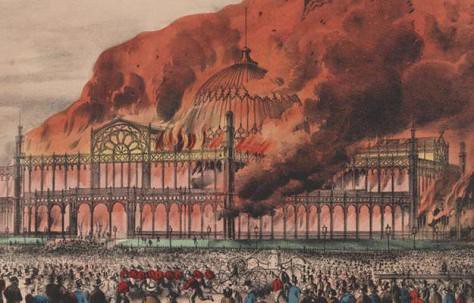
The building was located on a site between Fifth and Sixth Avenues on 42nd Street, in what is today Bryant Park. It was completed in June 1853, at which time this large medal was struck to commemorate the occasion.
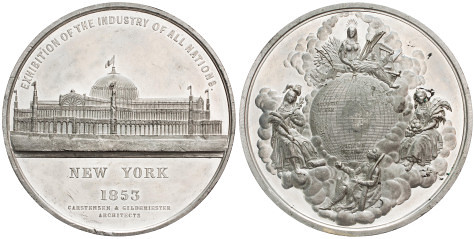
The obverse shows the Crystal Palace in all its glory while the reverse depicts a globe surrounded by allegorical figures bearing the varied attributes of industry. 1940.100.1018.rev.noscaleThe beatified figure of Europe reigns supreme at the top while a man in native dress looks up at her from below. As the title and imagery implies, the exhibition was intended to highlight the industrial and artistic achievements of the United States, and the supposed march of civilization. The exhibition proved popular and it provided a model of sorts for the string of World’s Fairs that were subsequently staged around the country.
To read the complete article, see:
THE NEW YORK CRYSTAL PALACE IN FLAMES—OCTOBER 5,
1858 (www.anspocketchange.org/new-york-crystal-palace-in-flames-october-5-1858/)
THE BOOK BAZARRE
COMMEMORATIVE MEDAL SELECTIONS FROM BALDWIN'S
Emperor Showa, Western Tour Medal
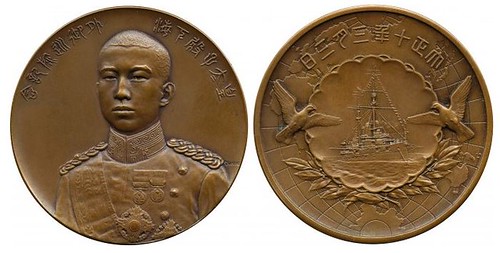
Japan, Emperor Showa [Hirohito], (1926-1989), as Crown Prince, Copper Medal, 1921, commemorating his western tour, ¾-facing bust, rev warship flanked by two doves, 60mm, in original case of issue.
To read the complete item description, see:
www.baldwin.co.uk/emperor-showa-western-tour.html
Battle of the Taku Forts Medal, 1900
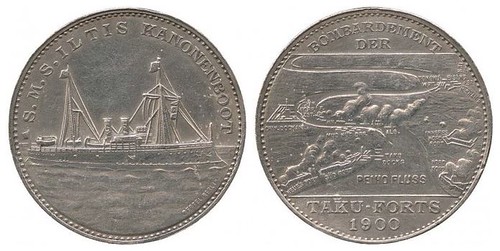
China, Qing Dynasty / Germany, Boxer Rebellion, Battle of the Taku Forts, 1900, Silver Medal by Oertel (Berlin), starboard view of the German gunboat SMS Iltis, rev birds eye panorama of the mouth of the Haihe River with the forts, fortifications and ships depicted and named, BOMBARDEMENT DER TAKU FORTS 1900, 34.5mm (MH 421; Marienb 7172). Good very fine.
SMS Iltis, the second ship of that name on the China station, was 880 tons, 1300 hp and carried eight 3.4in guns. Built in Gdansk and launched in August 1898, she came into service 1 December 1898. Her Commander, Lieutenant Wilhelm Andreas Jacob Emil Lans (1861-1947), was wounded in the action. The Siege of the Legations commenced on the 20 June 1900, three days after this action. Following the outbreak of World War I, SMS Iltis was scuttled in Kiau Chau. Taku, now Tanggu, is now a suburb of Tianjin and the location of the catastrophic warehouse explosion of August 2015, scenes of which were reported worldwide.
To read the complete item description, see:
Battle of the Taku Forts, 1900
(www.baldwin.co.uk/battle-of-the-taku-forts-1900.html)
Chinese Products Exhibition Medal, 1928
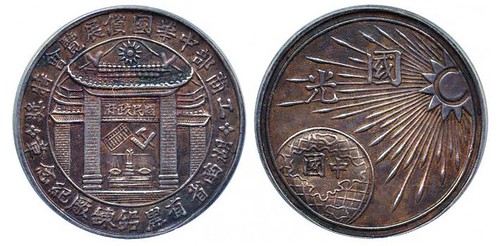
Republic of China, Chinese Products Exhibition Special Prize, ND (1928), Silver Medal, traditional Chinese building with hammer and square, abacus and scales inside, rev sun over rudimentary globe and map of China, 31mm, 6.8g
To read the complete item description, see:
Chinese Products Exhibition, 1928
(www.baldwin.co.uk/chinese-products-exhibition-1928.html)
CHRISTIE'S SELLS SIR ERNEST SHACKLETON'S MEDALS
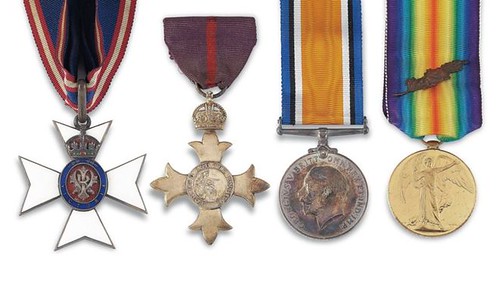
A number of medals awarded to Antarctic explorer Sir Ernest Shackleton have raised £585,000 at auction.
Fifteen British and foreign awards contained in 12 lots went under the hammer at Christie's in London.
A lot of four British medals easily surpassed the £30,000 estimate to sell for £230,500.
The decorations were the Commander of the Royal Victorian Order, Officer of the Order of the British Empire, British War Medal and Victory Medal.
Shackleton was knighted as a Commander of the Royal Victorian Order in recognition of the 1907-1909 Nimrod Expedition when he reached the furthest south ever explored.
Sir Ernest's Chilean Order of Merit beat the guide price of £4,000 to £6,000 to go for £74,500.
The medal recognises the survival and rescue of his crew after the ship Endurance was crushed by ice in 1915.
A Royal Geographical Society's Silver Medal, awarded for the the successful British Antarctic expedition aboard Discovery, more than doubled the £40,000 estimate to sell for £86,500.
Born in Co Kildare in 1874, Shackleton was aiming to circumnavigate the Antarctic continent on his fourth expedition when he died of a heart attack off South Georgia in 1922.
The medals were sold as part of Christie's Travel, Science and Natural History auction.
To read the complete article, see:
Sir Ernest Shackleton medals raise £585,000 at auction (www.bbc.com/news/uk-34482326)
1908 GOLD MANCHESTER UNITED MEDAL
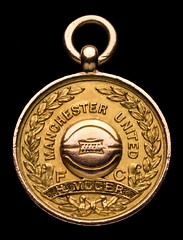 A rare medal awarded to trail-blazing Manchester United goalkeeper Harry Moger after he helped United win their very first Football League
Title in 1908, is set to fetch around £30,000 at auction.
A rare medal awarded to trail-blazing Manchester United goalkeeper Harry Moger after he helped United win their very first Football League
Title in 1908, is set to fetch around £30,000 at auction.
The 15-carat gold Football League Championship medal is inscribed: ‘Manchester United F.C.H. Moger, League Champions,Season 1907-1908.”
It is expected to sell for between £25,000 and £35,000 at Graham Budd Auctions in London on Tuesday, October 27.
Harry Moger joined Manchester United in 1903 and was a member of the United team that won the club’s first major honours, namely the Football League titles in 1908 and 1911 and the FA Cup in 1909, the first of United’s 11 FA Cup final triumphs.
In their book, ‘Manchester United : A Complete Record, 1878-1992’, Ian Morrison and Alan Shury, say: “Harry Moger was United’s regular goalkeeper during their first really successful period between 1908 and 1911, when they won the League Championship twice and the FA Cup.
The year, 1908, was momentous for Harry Moger. Not only did he help Manchester United win the Football League title that year, he also married wife, Annie, from Droylsden.
To read the complete article, see:
Rare
Manchester United medal commemorating first league title win in 1908 set to fetch around £30,000 at auction
(www.manchestereveningnews.co.uk/news/greater-manchester-
news/rare-manchester-united-medal-commemorating-10235609)

Visit our website for Books and Medals.
SignatureArtMedals.net
2015 WALL STREET BOURSE AND AUCTION
At the 5th Wall Street Bourse and Auction, several unusual new events and activities are planned. One of these will be the first offering of one of the most important collections of scripophily, the collecting of antique stock and bond certificates, that of John E. Herzog.
Mr. Herzog has been a collector since 1959, and when he began, there were very few collectors and very few certificates offered for sale. As the years went by, interest grew and the market became very interesting. During much of this time, Mr. Herzog was also the Chairman of R. M. Smythe & Co., Inc., a numismatic auction firm, and so had an opportunity to see this rapidly growing market at close range.
Herzog came to appreciate 18th century financial documents, especially those of the very young America, and has devoted much attention to the Federal Period in his collecting interests. Small specialties were also created, and his collection covers many subjects, such as shipping, medical subjects, women on certificates, and others.
Offerings from the collection will be on the Bourse floor at the Roland & Co. dealer table, and there will also be a number of lots in the Archives International auction on Saturday October 24, also being held at the Museum of American Finance. Two Edison electric light bulbs will be there, and other objects of financial history interest. This will be the beginning of a series of offerings from the important Herzog Collection and promises to be quite interesting.
The 5th Annual Wall Street Collectors Bourse will be held October 22-24 in the exhibition gallery of the Museum of American Finance at 48 Wall Street (www.moaf.org). An event for lovers of financial history, it brings dealers, collectors and artists together to enjoy and exchange coins, collectible stock and bond certificates, antique paper money, autographs, and related memorabilia.
Archives International Auctions will hold the public and Internet sale on the Bourse floor on Saturday morning, October 24 at 10:30am.
Museum admission is FREE during the Bourse, so visitors can enjoy the show and museum's fascinating exhibits in one visit, as well as interesting talks and workshop, and many interesting offerings. Don't miss this unusual collectors event.
October 22, 2pm
Numismatist Thomas Tesoriero: "The Twelve Caesars on Gold Coins"
October 23, 2pm
Artist Joel Iskowitz: "Designing Congressional Gold Medals: An Artist's Perspective"
October 24, 9am
Dealer Scott Winslow, International Bond and Share Society Breakfast Talk, (light breakfast available)
Saturday, October 24, 11am-12 noon
Inspector Collector Harley Spiller and Award-winning Dealer Declan Hurley, "The Secret Life of C-Notes: A Workshop for Teens Who
Like Money", in the Museum auditorium
October 24th 2pm
Collector/Dealer Lawrence Schuffman, "American History on Our Money"
To read the complete article, see:
5th Annual Wall Street Collectors Bourse
(www.moaf.org/events/general/evt_20151022)
THE BOOK BAZARRE
HEIDELBERGER MÜNZHANDLUNG AUCTION 66
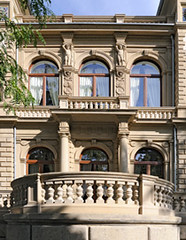 November 16-18, 2015
November 16-18, 2015
Heidelberger Münzhandlung Herbert Grün
Auction 66
Heidelberger Münzhandlung presents spectacular collection of Bavarian coins and medals featuring nearly 2,000 lots
About 5,200 lots will be sold during the Fall Sale of the Heidelberger Münzhandlung. The sale is highlighted by the R.W. Collection, a high-caliber collection of Bavarian coins and medals. Pre-1871 Germany, the Holy Roman Empire, and the foreign countries are also well represented, as is the German Empire.
From November 16 to 18, 2015, nearly 5,200 lots will be sold at the Europäischer Hof / Heidelberg. As always, Herbert Grün offers an interesting range of numismatic material, dating from ancient to modern times. The sale is highlighted by many rarities and interesting fractions in remarkable grades as they are rarely encountered on the market.
The auction sale will start with almost 200 ancient coins – Celtic, Greek, Roman, and Byzantine – offering a number of aurei at collector-friendly estimates.
Roughly 1,200 lots featuring world coins will be next. Geographically, they come from all over the world, starting with ‘A’ as in Albania to ‘V’ like Venezuela. In this section, the connoisseur discovers outstanding material in the finest grades, especially in the lower price range. The material includes minor issues of great importance. With their untouched beauty, they are much harder to come by than coins in the weight of a thaler and gold coins. As you will see, the offer of course comprises the latter categories as well.
A telling example is the series of Greek coins, which not only features the 5 drachm which used to circulate in the greater part of Europe due to Greece’s participation in the Latin Monetary Union. Here, Greek change can be found as well, and in the best grades imaginable, like a 1845 1/4 drachm struck in Athens in extremely fine to FDC. This extremely rare item is estimated at 3,000 euros, a lot of money compared to the estimate of a perfect 10 lepta struck 1833 in Munch, which is estimated at as little as 100 euros.
Collectors of US American coins will appreciate the rich offer in their section featuring, among others, a large series of half dollars in the best grades.
The Holy Roman Empire is likewise well-represented. We would like to mention a series of coins of Emperor Francis Joseph, offering all rarities in the finest grades possible, like a commemorative thaler on the inauguration of the Carl-Ludwig-Haus on the Raxalpe as well as a two commemorative double gulden, the first struck on the occasion of the 400th anniversary of the minting of the very first thaler in 1884, the second on the re-opening of the Kuttenberg silver mines in 1887.
Grün puts a special emphasis on pre-1871 Germany. The range from Anhalt to Würzburg would constitute of 700 lots, were it not for a special collection listed under the letter ‘B’ for Bavaria: it is the R.W. Collection featuring Bavarian coins and medals. It has been assembled on the basis of the renowned Wittelsbach catalog and therefore also comprises the coinages of the Bavarian branches. Hence, we would like to encourage not only the collectors of Bavaria but also the aficionados of the Netherlands, of Tyrol, Cologne, and Greece, for example, to have a close look at the catalogue.
R.W. aspired to collect the full Wittelsbach catalog and was thus forced to make some compromises in terms of grades. Though the collection offered for sale does not include the spectacular top-class rarities in the most remarkable grades, all true admirers of Bavaria will nevertheless rejoice at this material, so comprehensive and rich, so reasonably estimated. About 2,000 lots will cross the auction block on November 17, 2015. An individual catalog is devoted to this special collection. It takes the potential buyer as little money as a 20 euro note to place a bid and see if he or she might become the lucky winner of, for example, a Medieval pfennig dating from the 13th century. This section not only includes the minor issues but likewise thaler-like coins and ducats, not all of which are prefect but collector-friendly estimated. The many rarities should not go unnoticed, including many unique specimens, some of which are very likely to be unpublished yet!
Let us return to pre-1871 Germany. All together, the range of numismatic offers features spectacular high-denomination silver coins, as the Augsburg 1627 double thaler estimated at 15,000 euros, attractive gold coins, as a 1834 10 thaler piecce of William of Brunwick-Wolfenbüttel, and minor issues in excellent grades, as a Dortmund 1754 1/24 thaler graded good extremely fine, estimated at 125 euros. Interesting specimens in exceptional grades are available in the two-digit range. The latest catalog of the Heidelberger Münzhandlung is a good prove for the fact that coin collecting is a worthy hobby for everybody, regardless of how much money he or she is able to spend.
Anyone who has ever browsed through the Jaeger is well aware of the fact that the Heidelberger Münzhandlung is the expert for rare German imperial coinages in the most remarkable grades. This catalog vouches for the truth of it, offering not only a complete type collection of the German gold issues but superb minor issues and spectacular silver coins as well. We would like to highlight a 2 mark from Saxe-Coburg-Gotha of which only 100 specimens have been struck on the occasion of the hereditary prince’s christening in 1911. No photographic image could remotely capture the appeal of this first strike.
The coins from the Weimar Republic are next in line, followed by the FRG and the GDR, as well as the dependencies, the patterns and mint errors.
The auction sale will be concluded by a larger offer of paper money, including a very fine series of French specimens.
The catalog may be ordered for a fee of 12,50 euros at the Heidelberger Münzhandlung Herbert Grün, Gaisbergstrasse 40, 69115 Heidelberg; phone ++49 / 6221 / 65 297-0; telefax ++49 / 6221 / 65 297-29; email: kontakt@hdmhg.de or at http://www.hdmhg.de/pgs/Katalog/_Katalog.html This is likewise the address at which the catalog can be viewed on the internet.
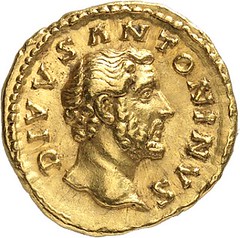

Lot 142: ANTONINUS PIUS, 138-161. Aureus. Consecratio under Marcus Aurelius. Rv. CONSECRATIO funeral pyre. RIC 435. Extremely fine. Estimate: 5,000,- euros
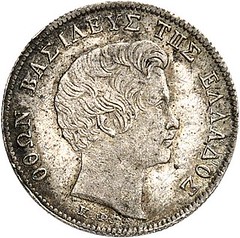
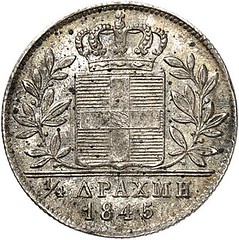
Lot 585: GREECE. Otto of Bavaria, 1832-1862. 1/4 drachm 1845, Athens. Divo 16c. Extremely rare. Extremely fine to FDC. Estimate: 3,000,- euros
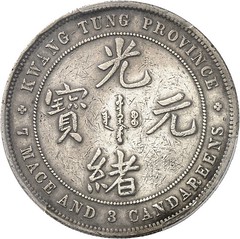
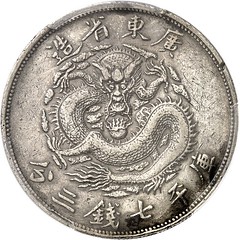
Lot 1135: CHINA. Kwangtung. Dollar n. d. (1889). Dav. 181. Extremely rare. Small rim nick, very fine. Estimate: 30,000,- euros
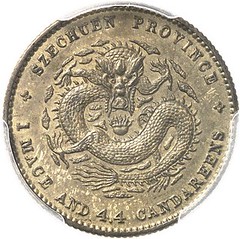
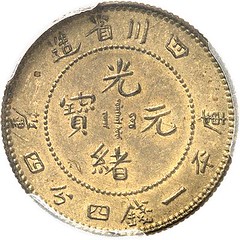
Lot 1137: CHINA. Szechuan. 20 cents n. d. (1898), pattern. KM Pn11. Very rare! Graded PCGS SP63 mint state. Estimate: 18,000,- euros
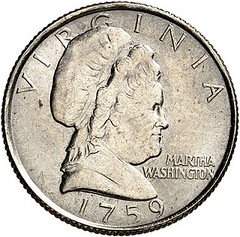
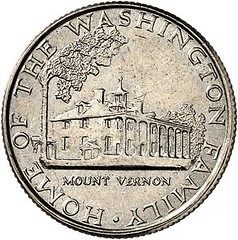
Lot 1303: USA. Dime 1759 (1965, of Edward Grove), pattern. Extremely rare. Extremely fine. Estimate: 7,500,- euros
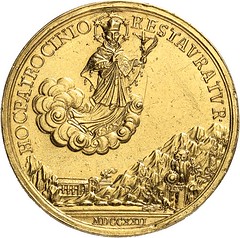

Lot 1475: HRE. Charles VI, 1711-1740. 5 ducats 1722, Prague, yield from the Eule Mine. Müs. 6/24. Extremely rare. Small trace of mounting, nearly extremely fine. Estimate: 16,000,- euros
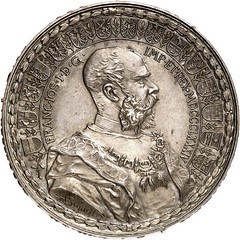
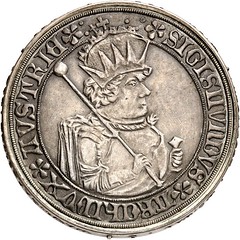
Lot 1578: HRE. Francis Joseph, 1848-1916. Commemorative double gulden 1884 of the Vienna Numismatic Society on the 400th anniversary of the minting of the first thaler. Thun 466. Extremely rare. Nearly FDC. Estimate: 7,500,- euros
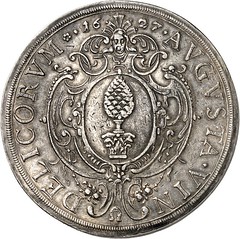
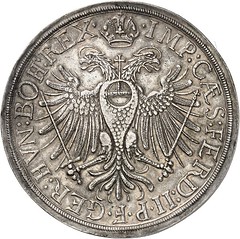
Lot 1658: GERMANY. Augsburg. Double thaler 1627. Dav. 5030. Very rare. Good very fine. Estimate: 15,000,- euros
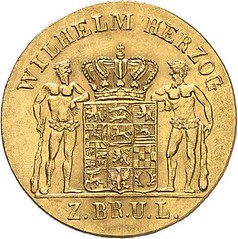
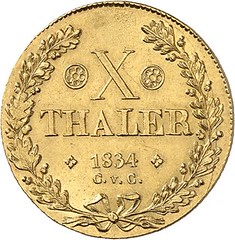
Lot 1712: GERMANY. Brunswick-Wolfenbüttel. 10 thaler 1834, variant without star. AKS 65 note. Very rare. Good extremely fine. Estimate: 5,000,- euros
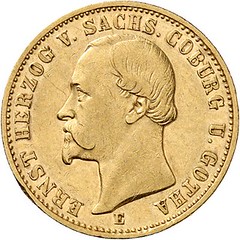
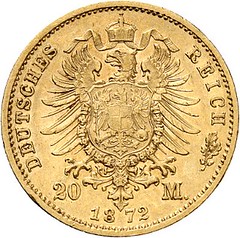
Lot 2838: GERMAN EMPIRE. Saxe-Coburg-Gotha. 20 mark 1872. J. 270. Rarest imperial gold coin type of all. Very fine / extremely fine. Estimate: 65,000,- euros
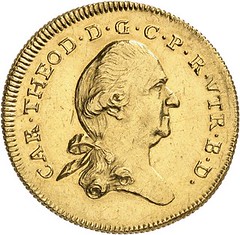
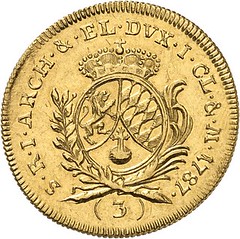
Lot 4128: W. COLLECTION BAVARIA. Charles Theodore, 1777-1799. 3 ducats 1787. Witt. 2322. Hahn 352. Extremely fine. Estimate: 8,000,- euros
PRANKSTER DISTRIBUTES FAKE BOOKS AND SIGNS
When Jeff Wysaski of Obvious Plant puts up one of his creations, he does not stick around to see the reactions. When he’s on a job, leaving fake signs and objects in his gym, at IKEA, in book stores, in chain stores, on the street or at a museum, he tries to be sneaky. Once the deed is done, “I run away as fast as possible,” he says.
Since January, Wysaski, a Los Angeles comedy writer who runs the website Pleated Jeans, has been planting jokes in the real world. They are delightful breaks in the world’s mundanity.

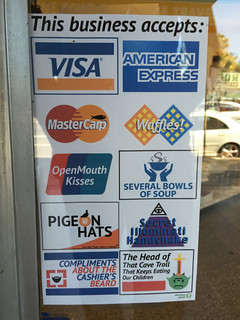
He got started on this particular project after losing interest in the web comics and other forms of internet humor he’d been pursuing. He’d put up funny signs before, and it happened that, around this time, ideas for jokes in public places started flooding his brain. For the first plant that he characterizes as “a little more adventurous,” he paid $20 or $30 to have a legitimate-looking sign made up, listing rules for a park. He stuck it in the ground at the park near his house:

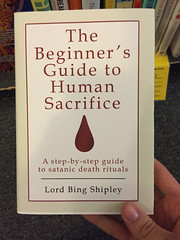 Some are simple signs, but others are much, much more elaborate. One of his favorite but most time-intensive projects involved writing fake
book covers—front, back and inside flaps—and planting them in an actual bookstore. Making the covers took 20 to 30 hours, but it was worth it. After
some Obvious Plant fans found the store, went to take pictures and pointed the books out to the store’s employees, the books were displayed
prominently, at asking prices of tens of thousands of dollars.
Some are simple signs, but others are much, much more elaborate. One of his favorite but most time-intensive projects involved writing fake
book covers—front, back and inside flaps—and planting them in an actual bookstore. Making the covers took 20 to 30 hours, but it was worth it. After
some Obvious Plant fans found the store, went to take pictures and pointed the books out to the store’s employees, the books were displayed
prominently, at asking prices of tens of thousands of dollars.
The first couple of times that Wysaski went into a public space to plant a joke, he was nervous and kept looking around, for someone to stop him. But soon he realized that everyone around him was just going about their day, unconcerned with whatever he was up to. “It’s amazing how inattentive people are,” he says. “No one is expecting someone to go into a store and put up fake signs. I’ve done it in front of employees, and they don’t notice.”
Occasionally, too, his plants will stay up for longer than one might expect. A fake hiring sign he put up in Best Buy was there for three whole months.
To read the complete article, see:
THERE'S A
MAN SCATTERING VERY FUNNY FAKE BOOKS, SIGNS AND PAMPHLETS AROUND L.A.
(www.atlasobscura.com/articles/theres-a-man-scattering-very-funny-fake-books-signs-and-pamphlets-around-la)
FEATURED WEB SITE: COLLECTORS.COM
This week's Featured Web Site is Collectors.com from Collectors Universe.Our mission is to connect buyers and sellers by using technology to promote the discoverability of collectibles. We compare thousands of collectibles from hundreds of sites at once, and then let you choose the one that is right for you. We help collectors discover and shop for items to complete their collections faster and at the most competitive market prices.
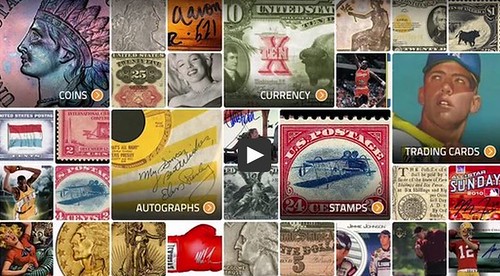
www.collectors.com
